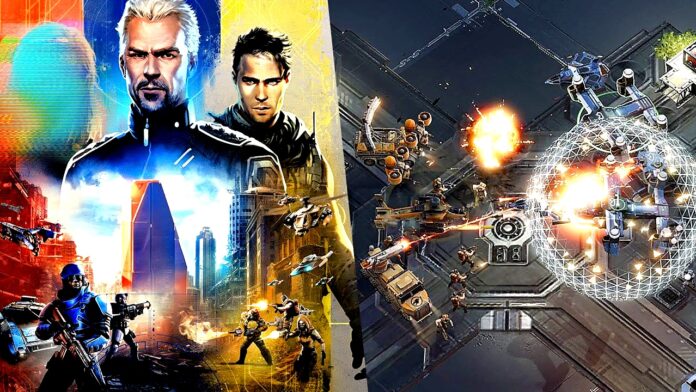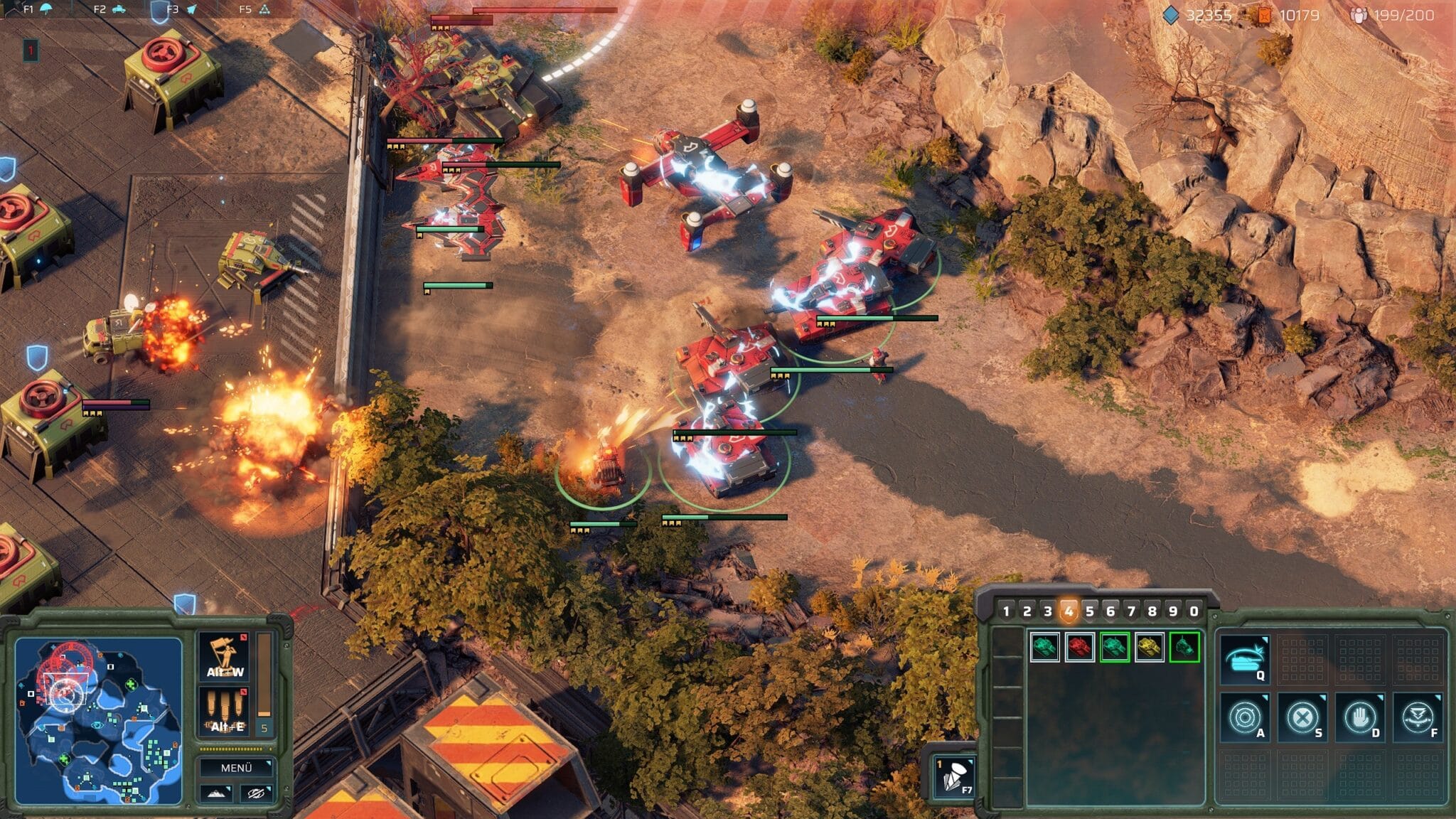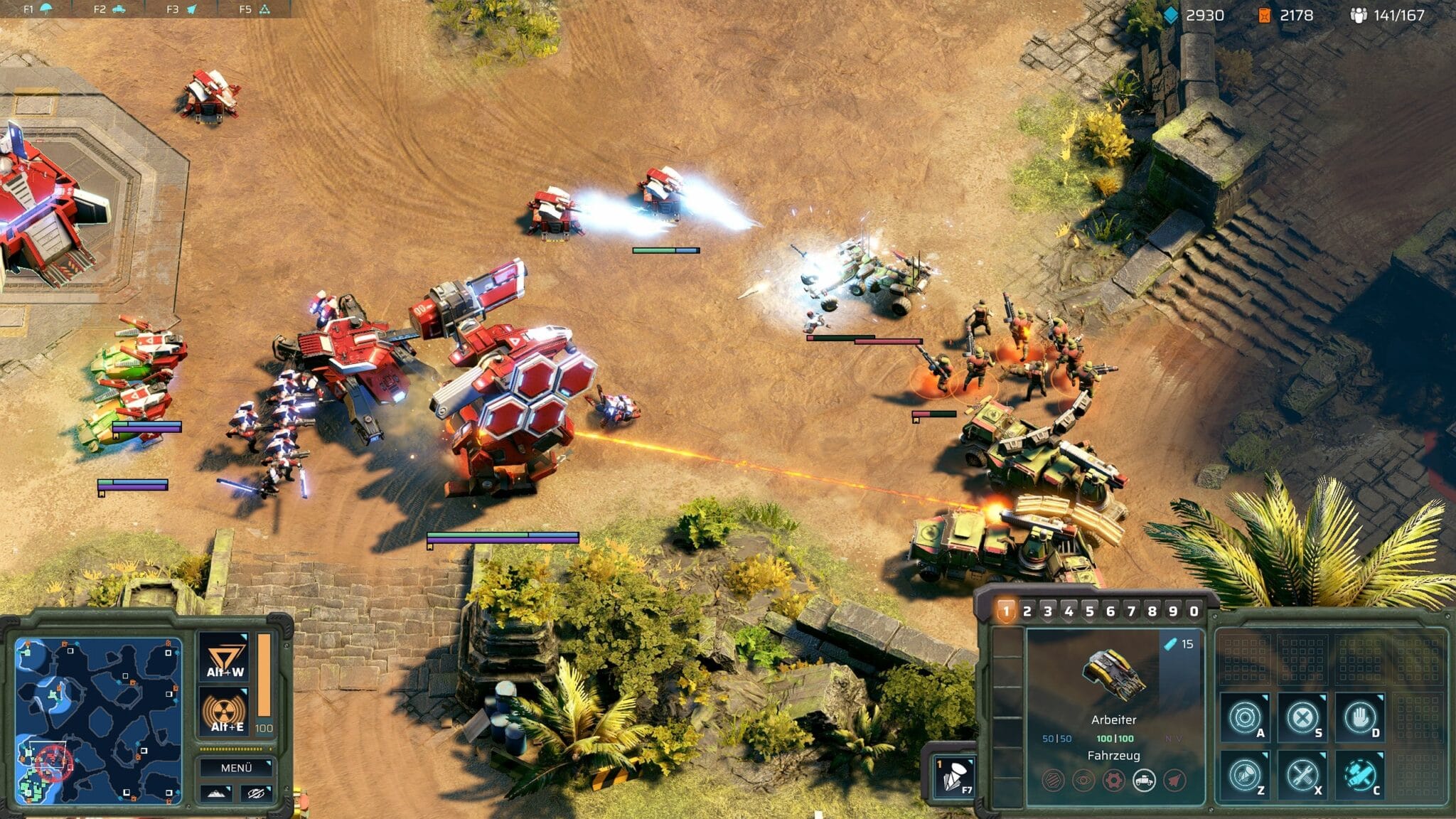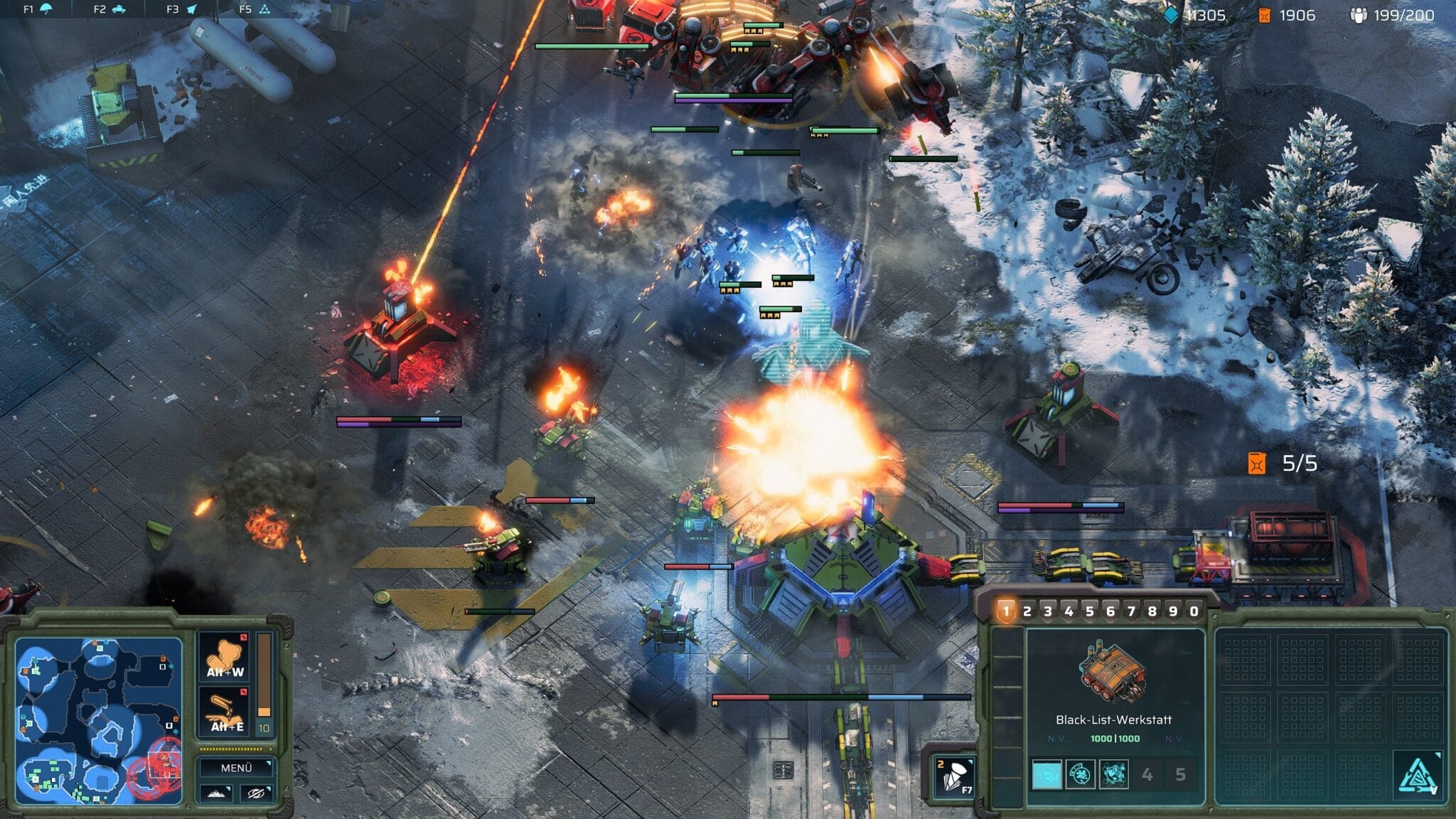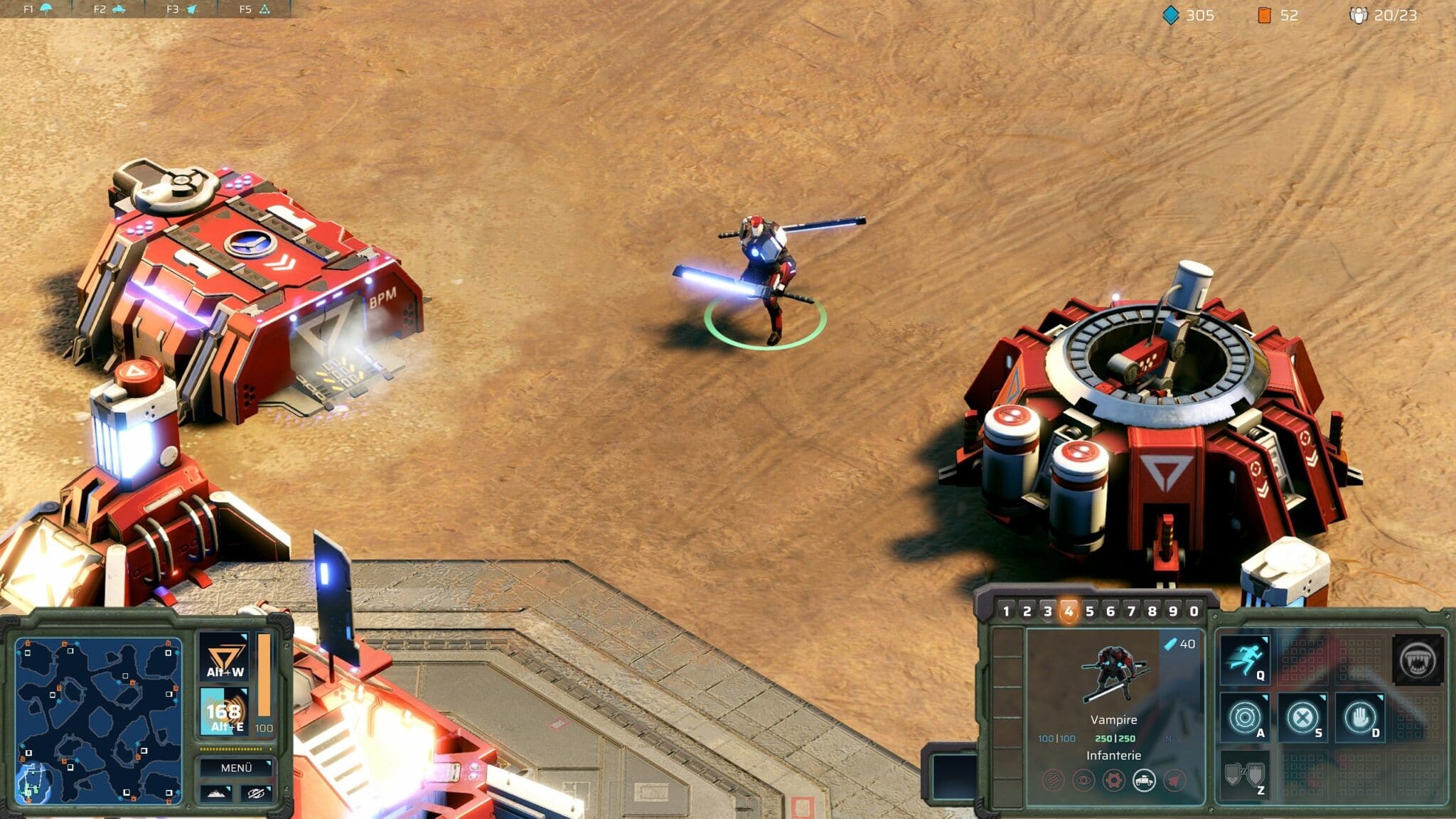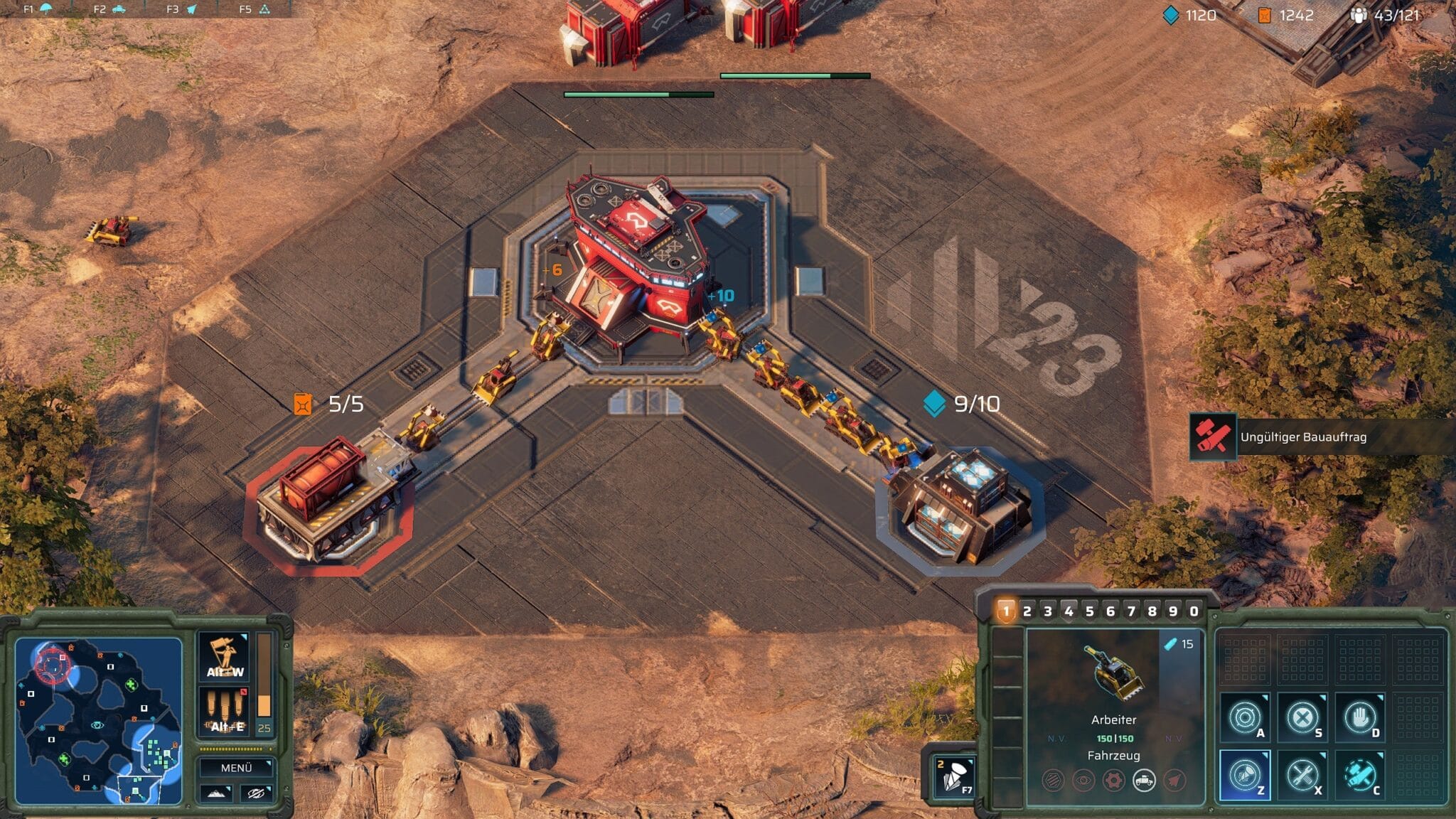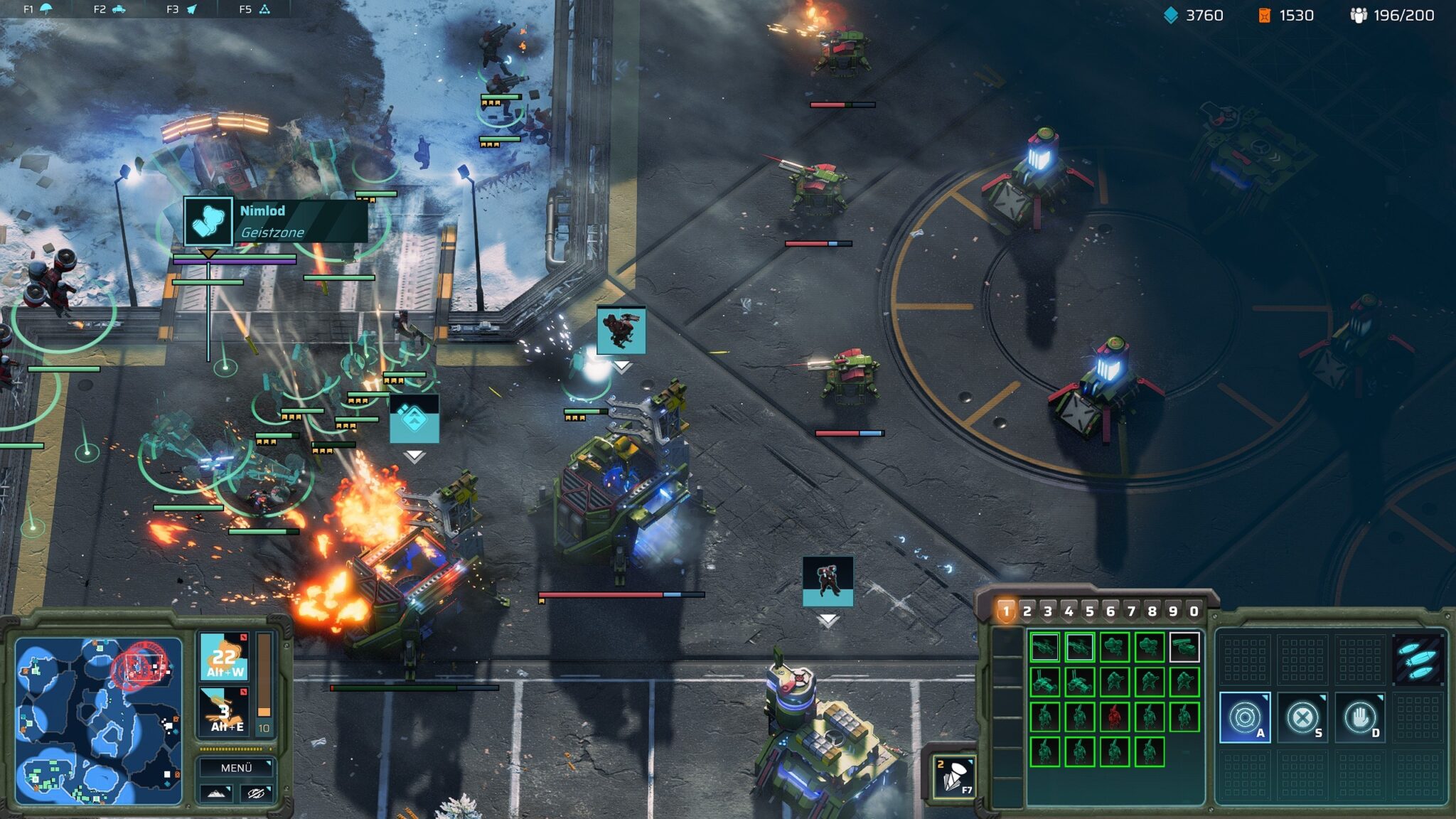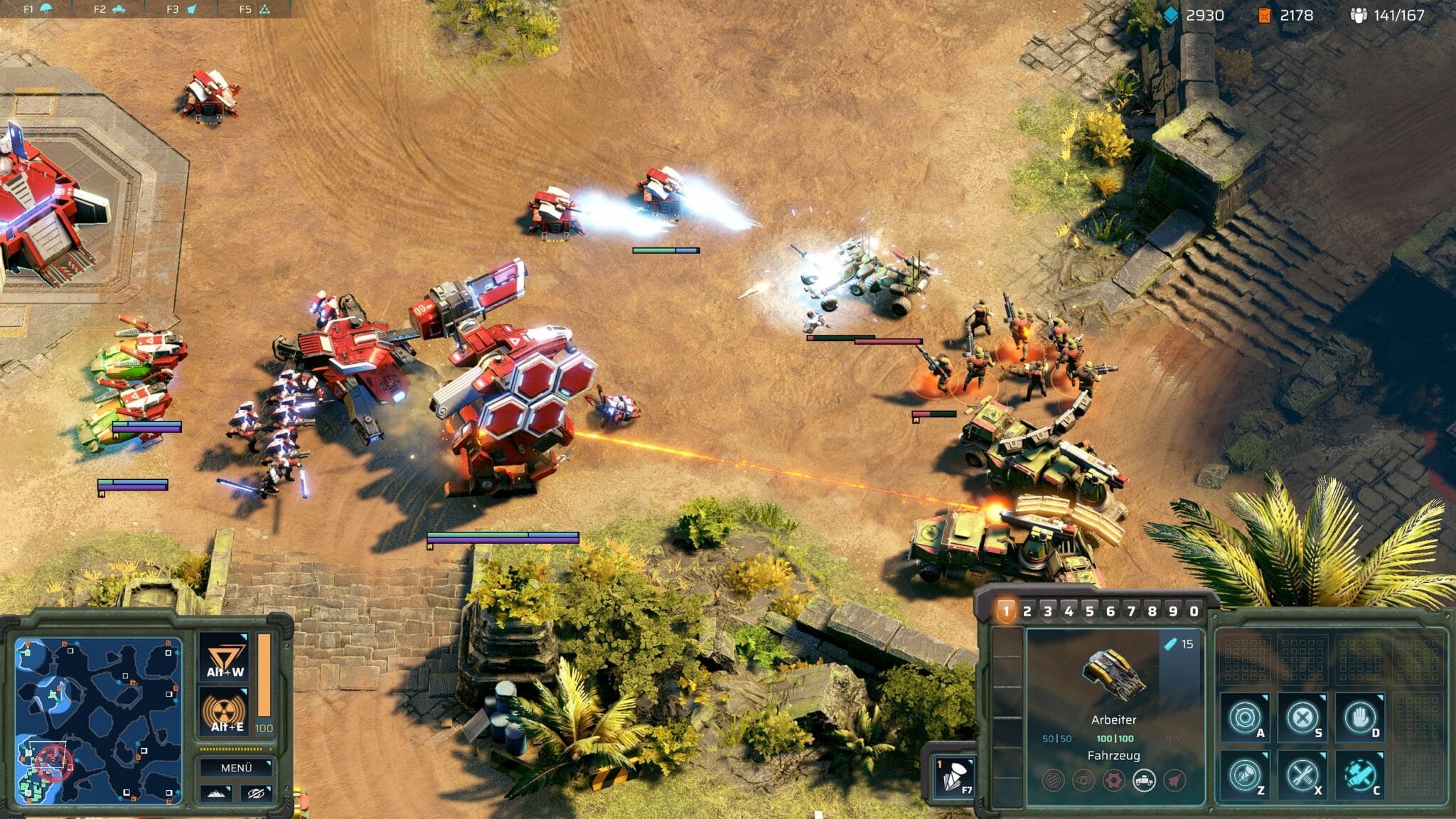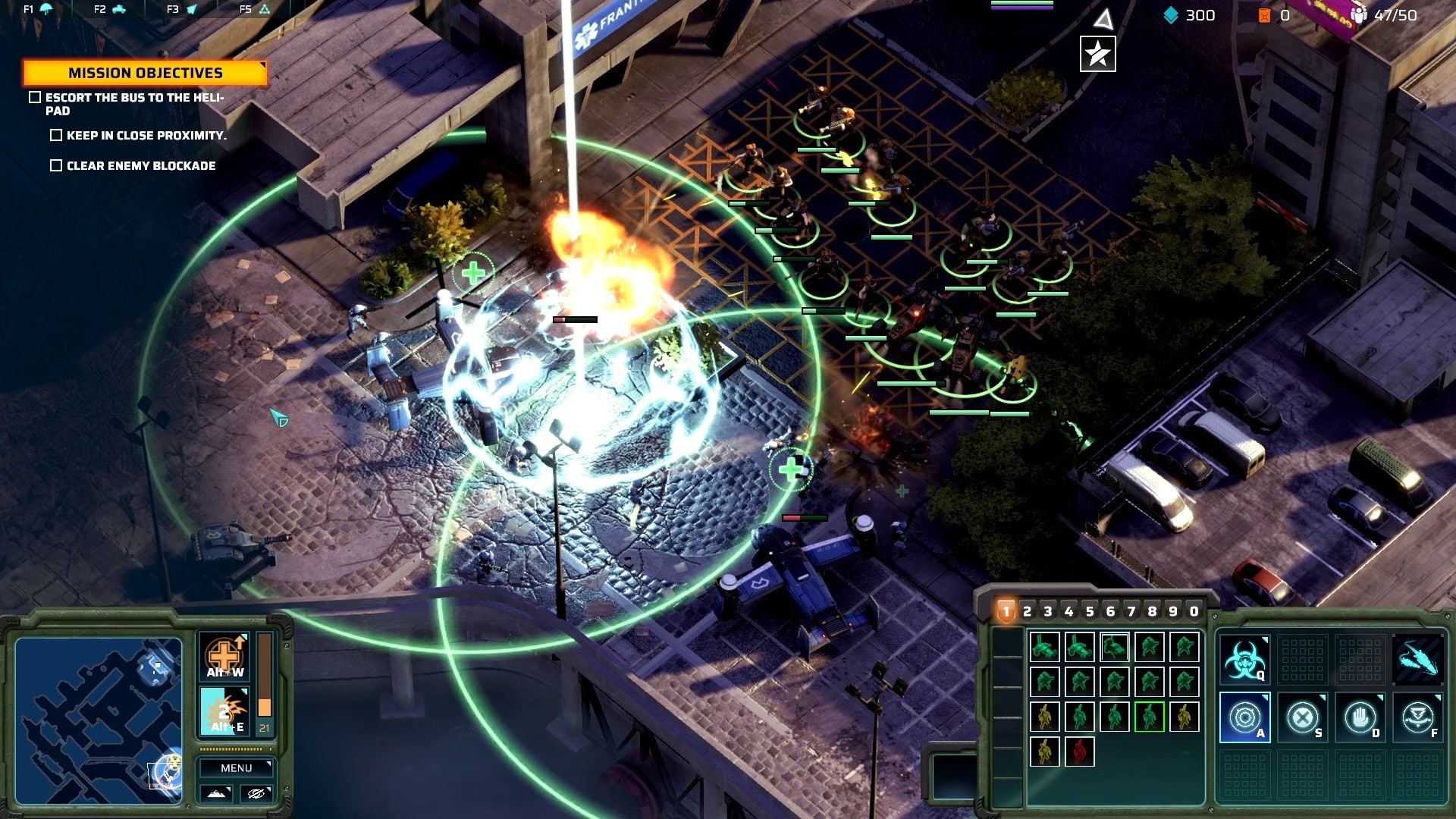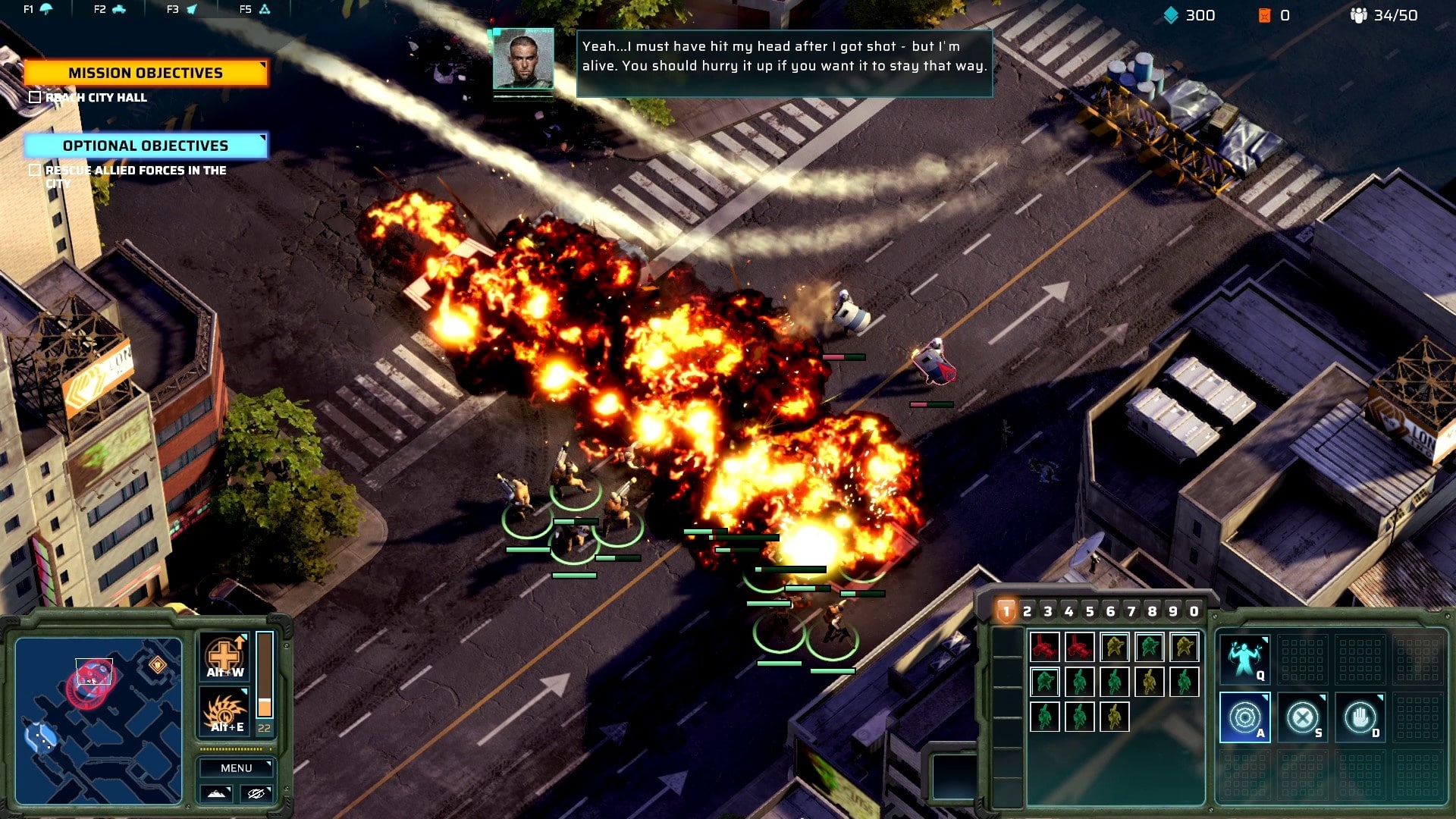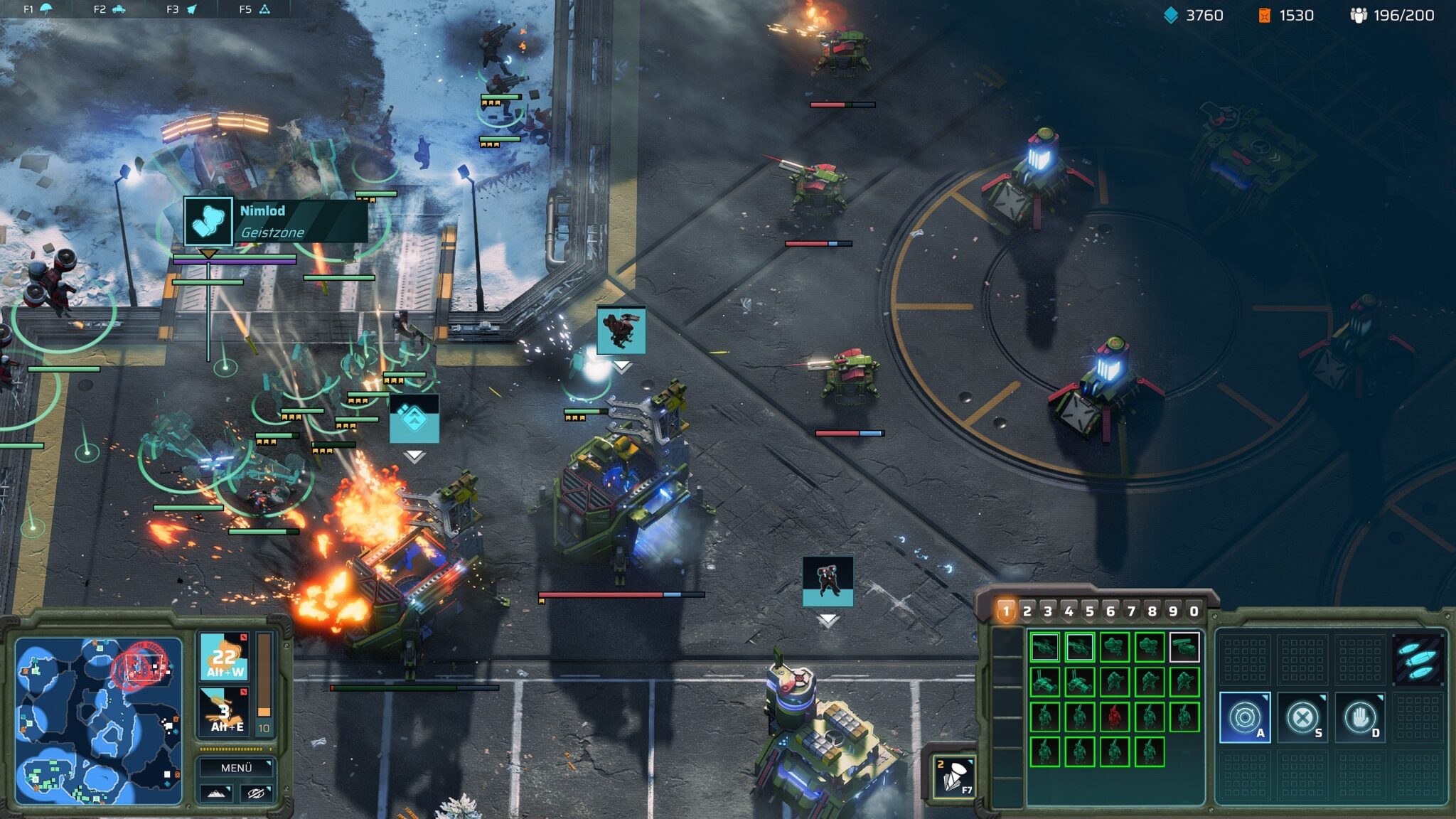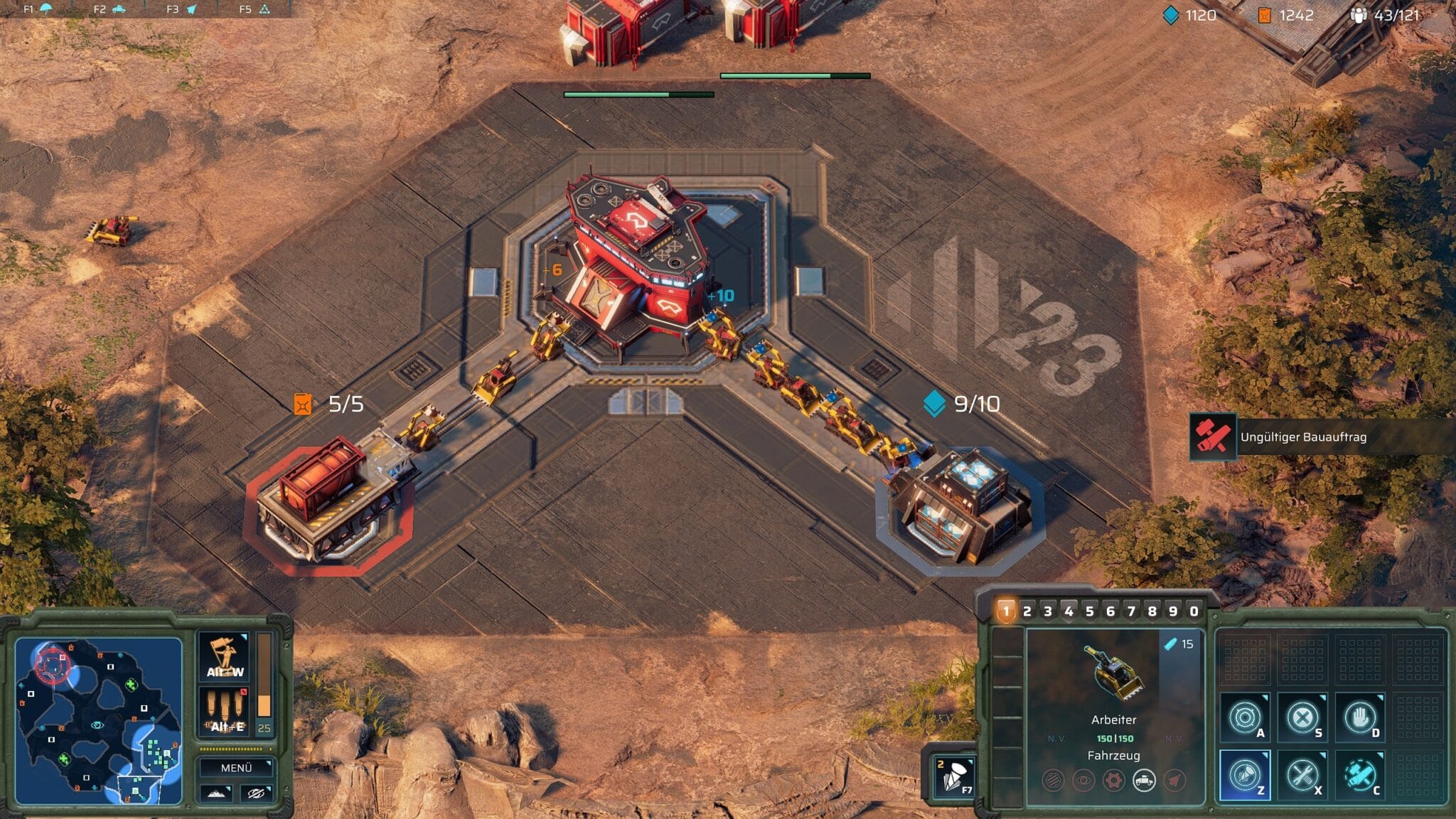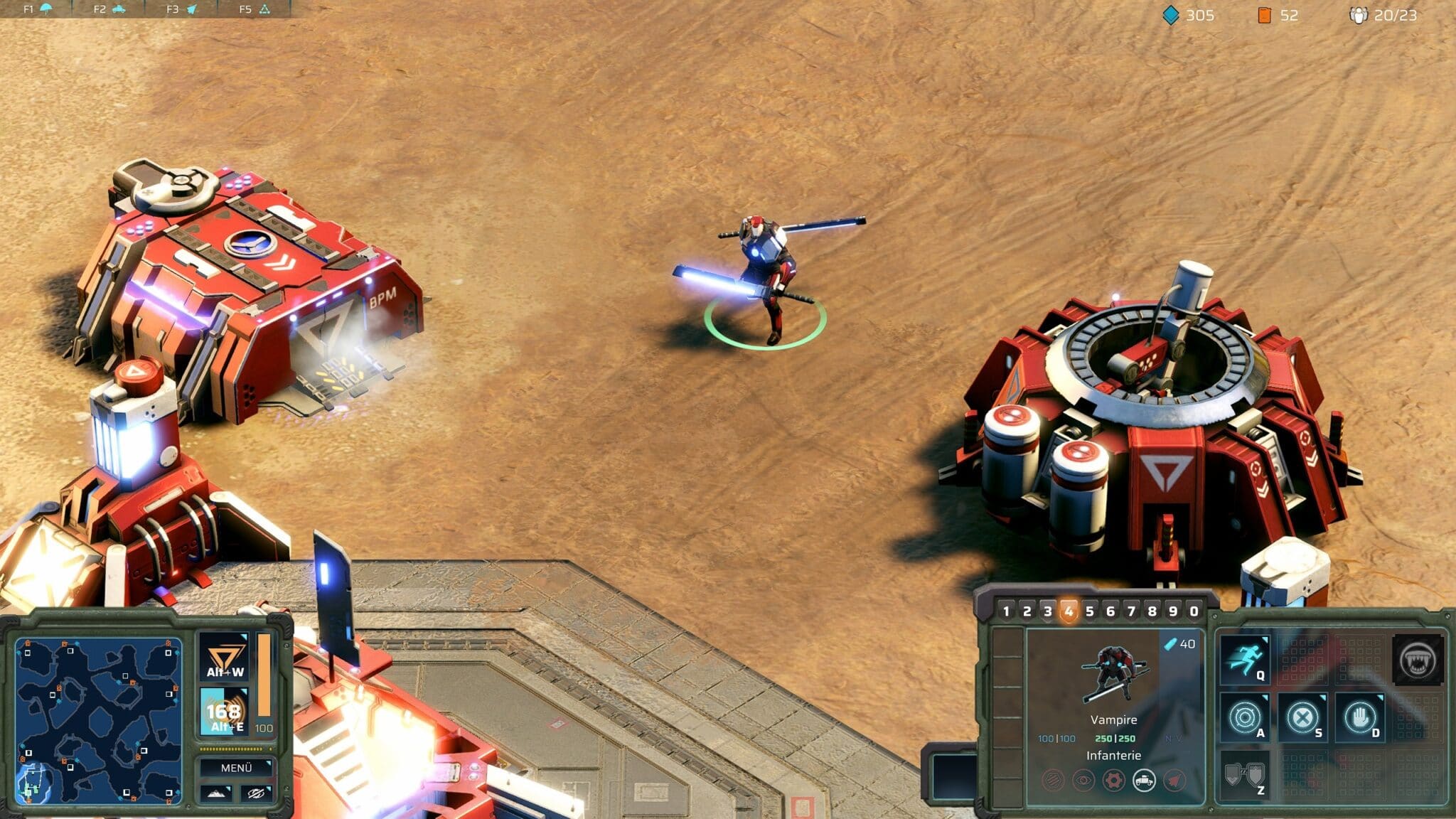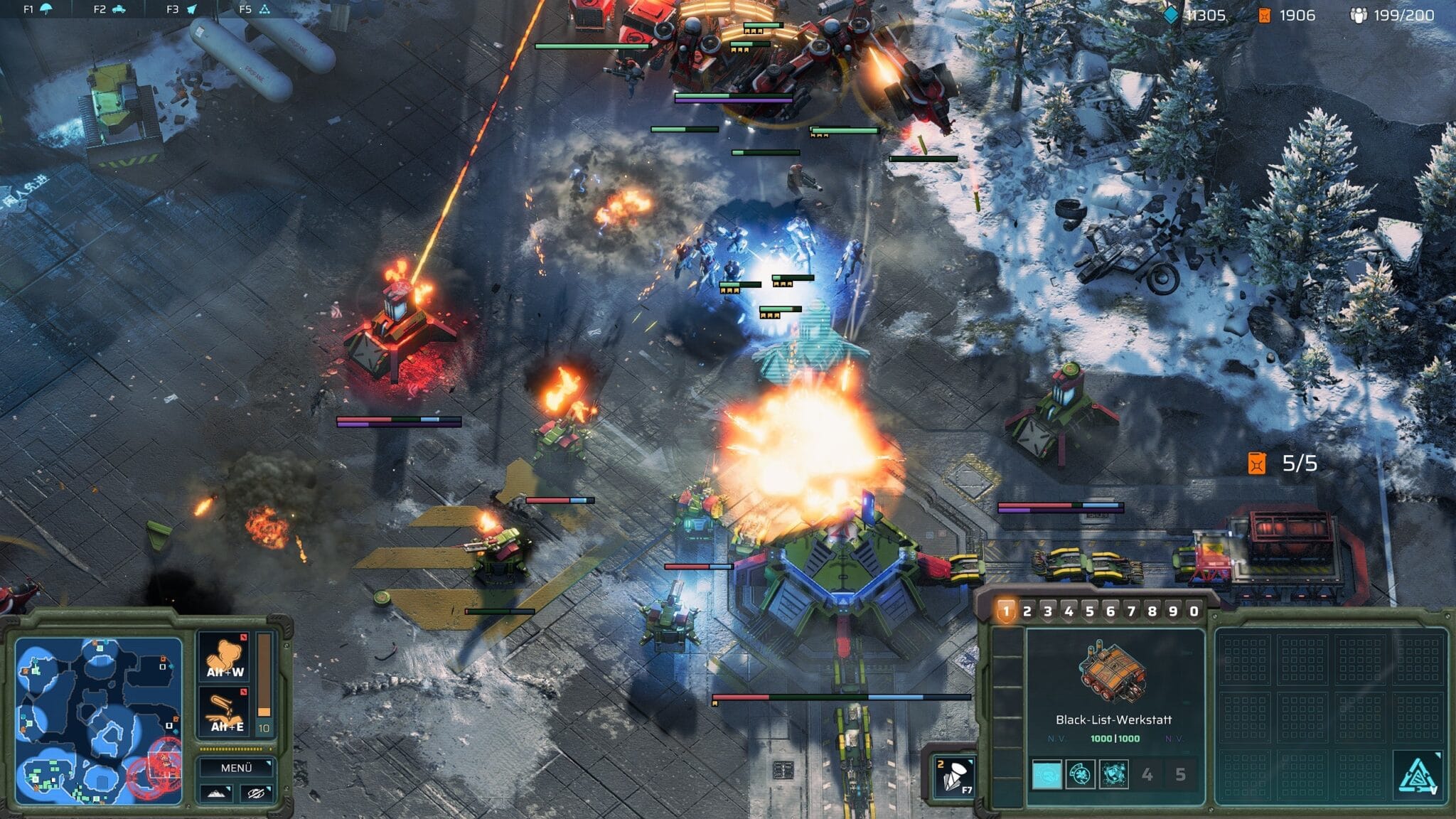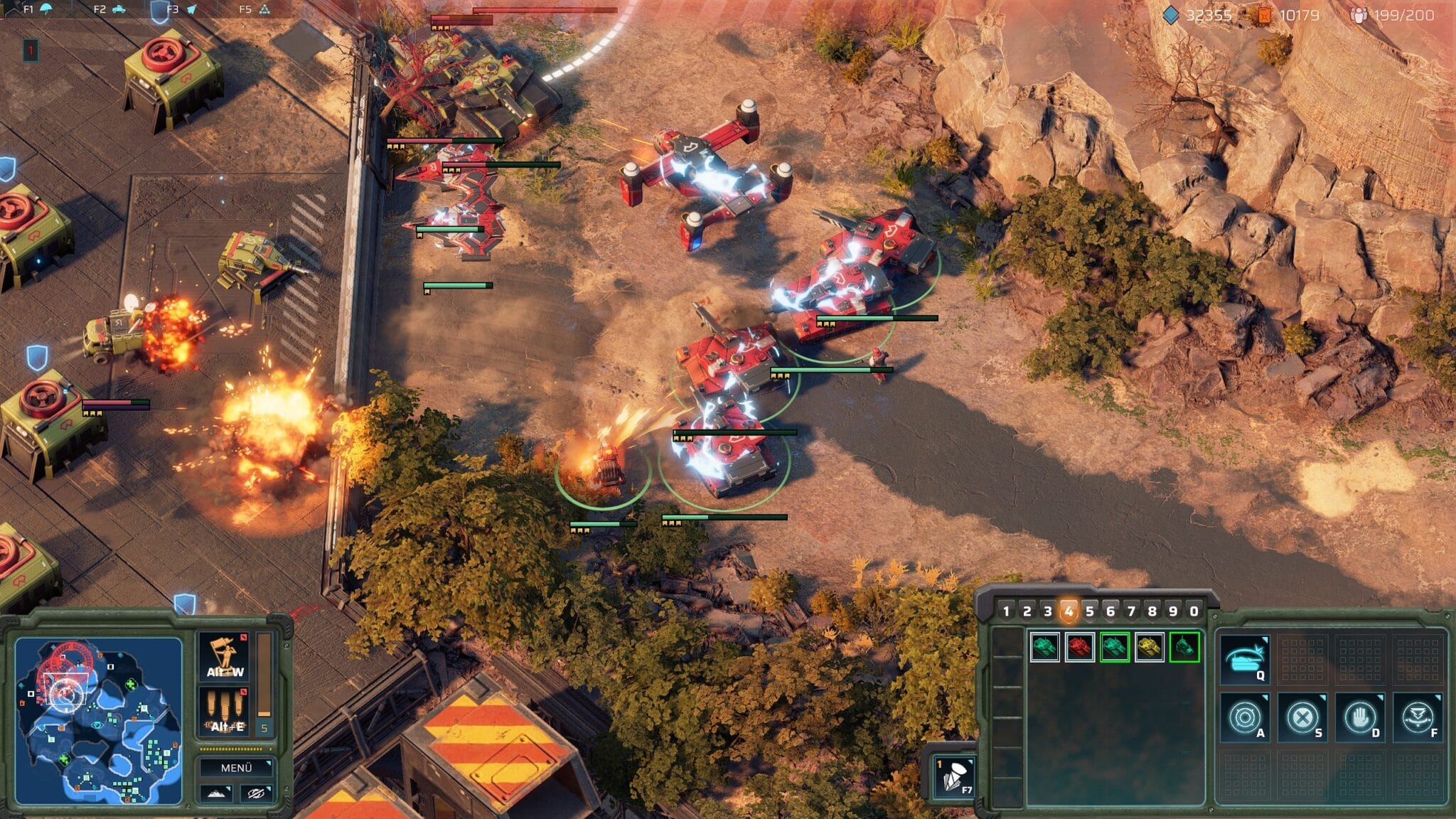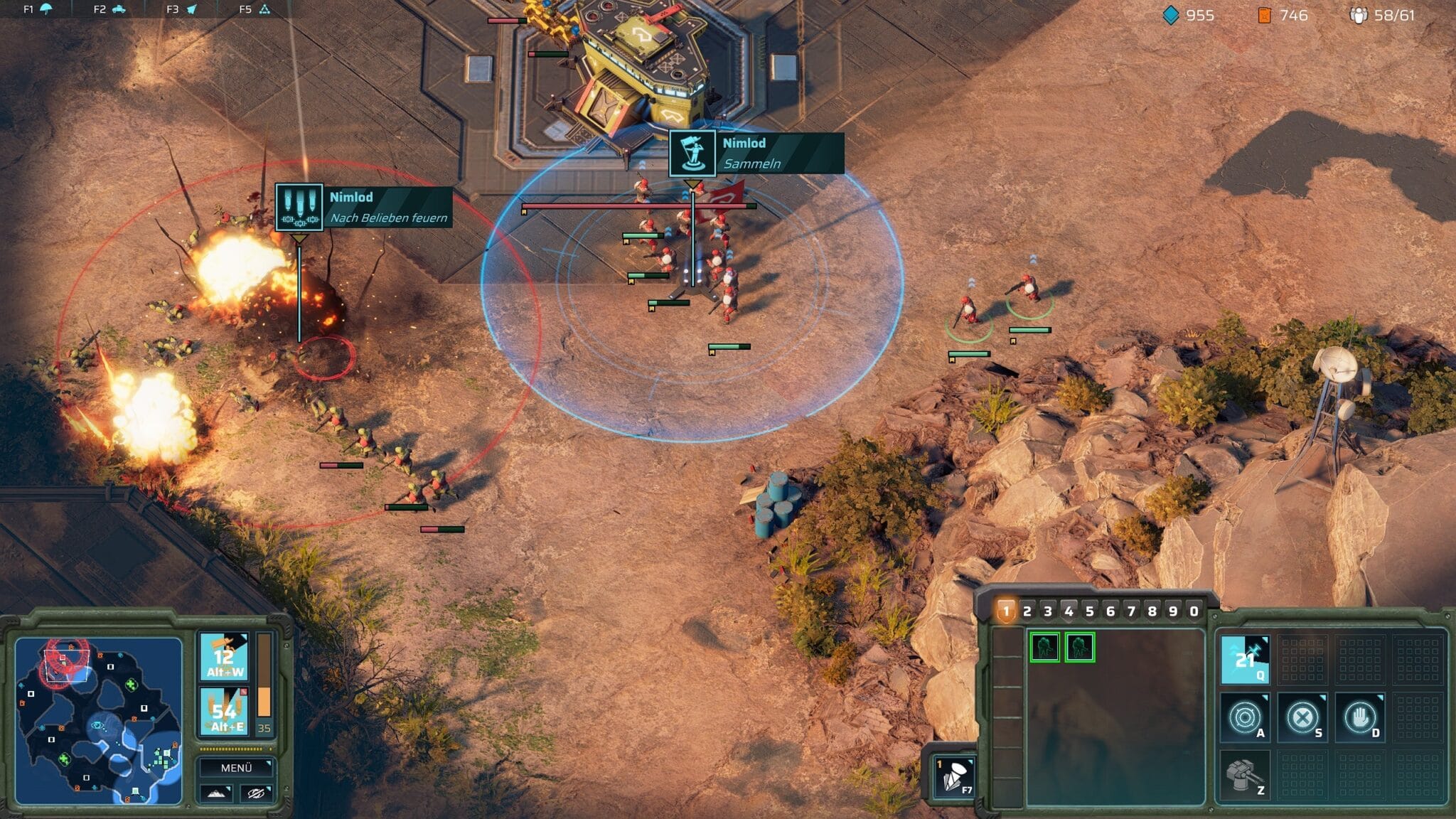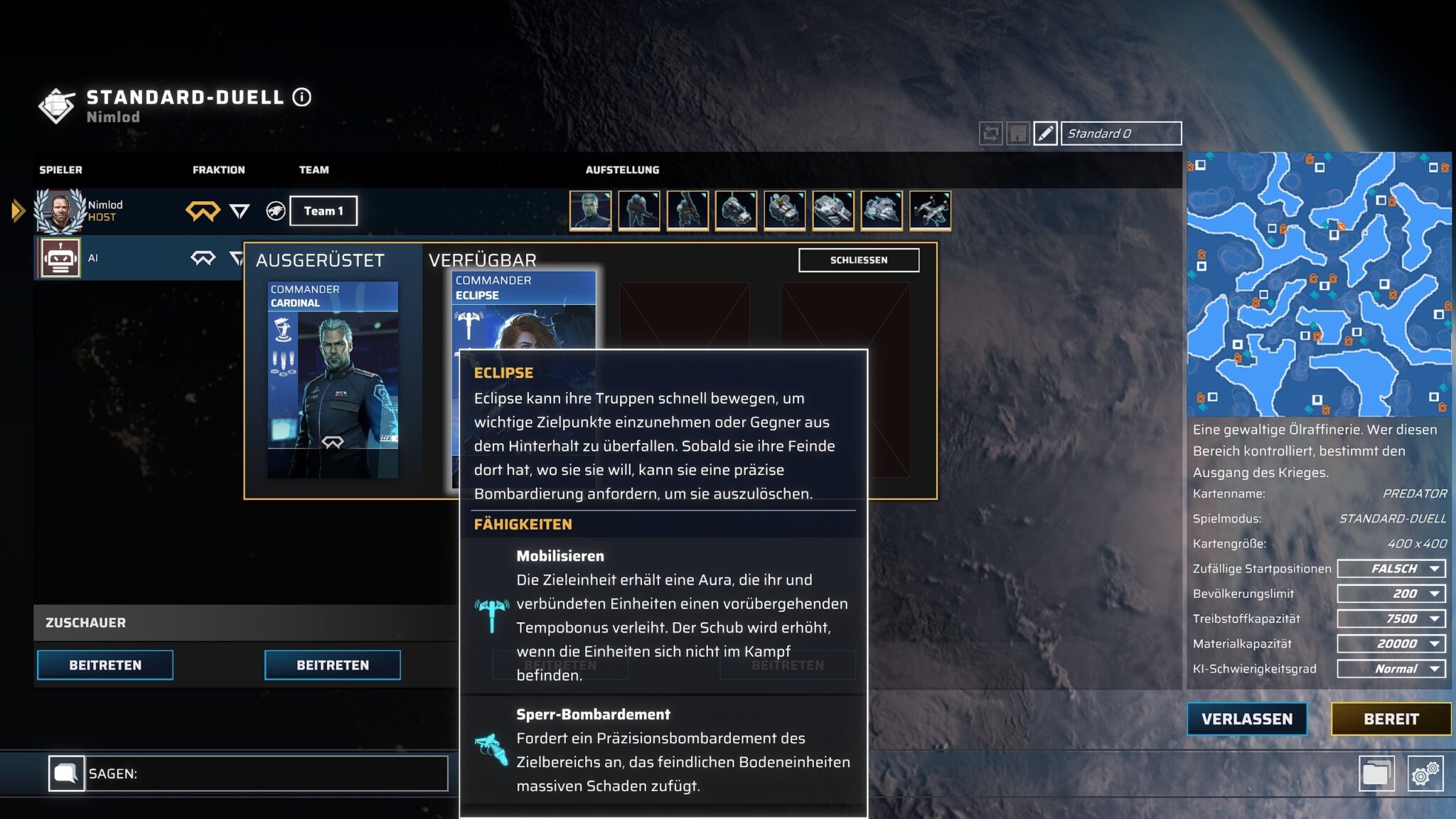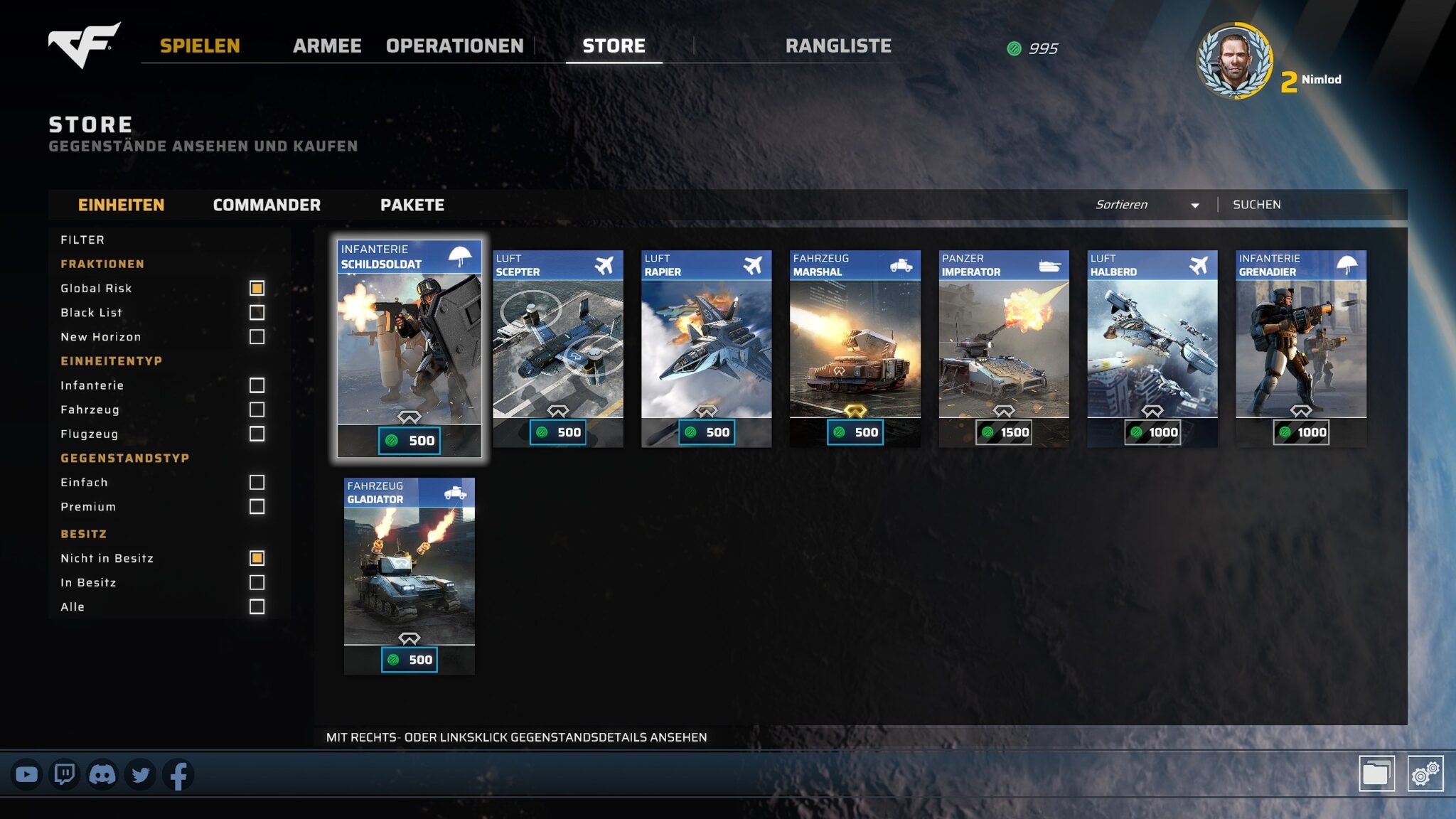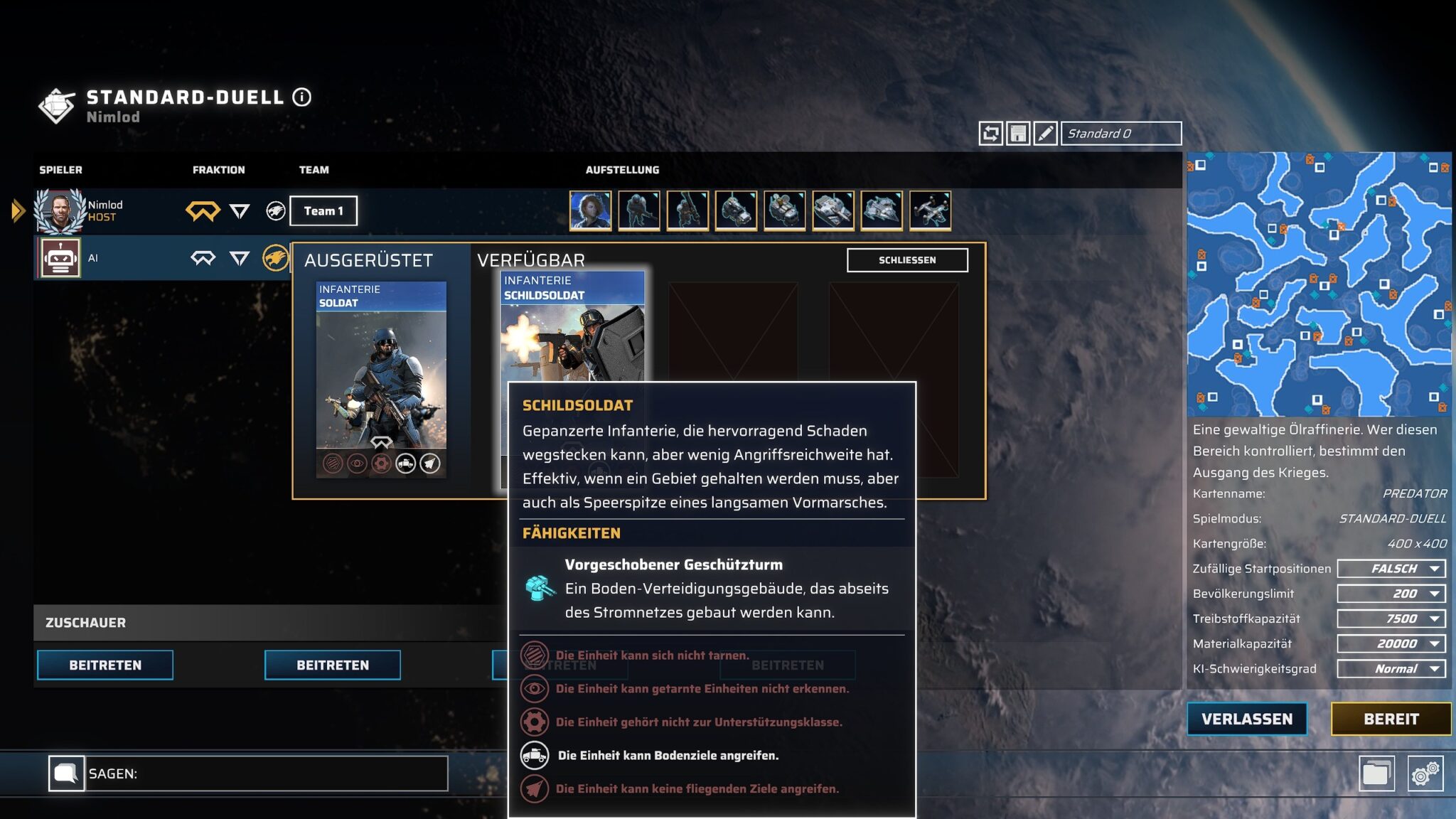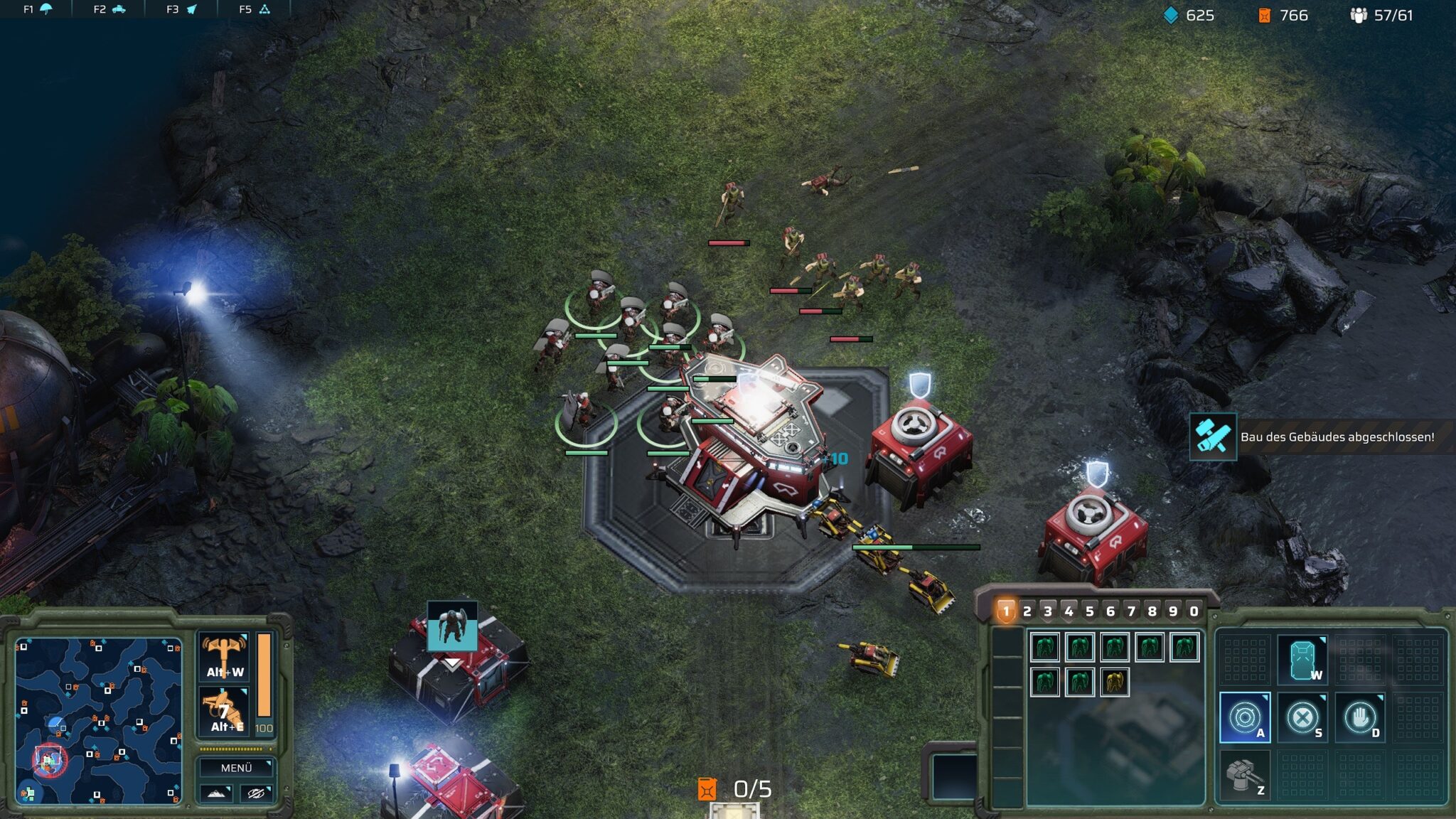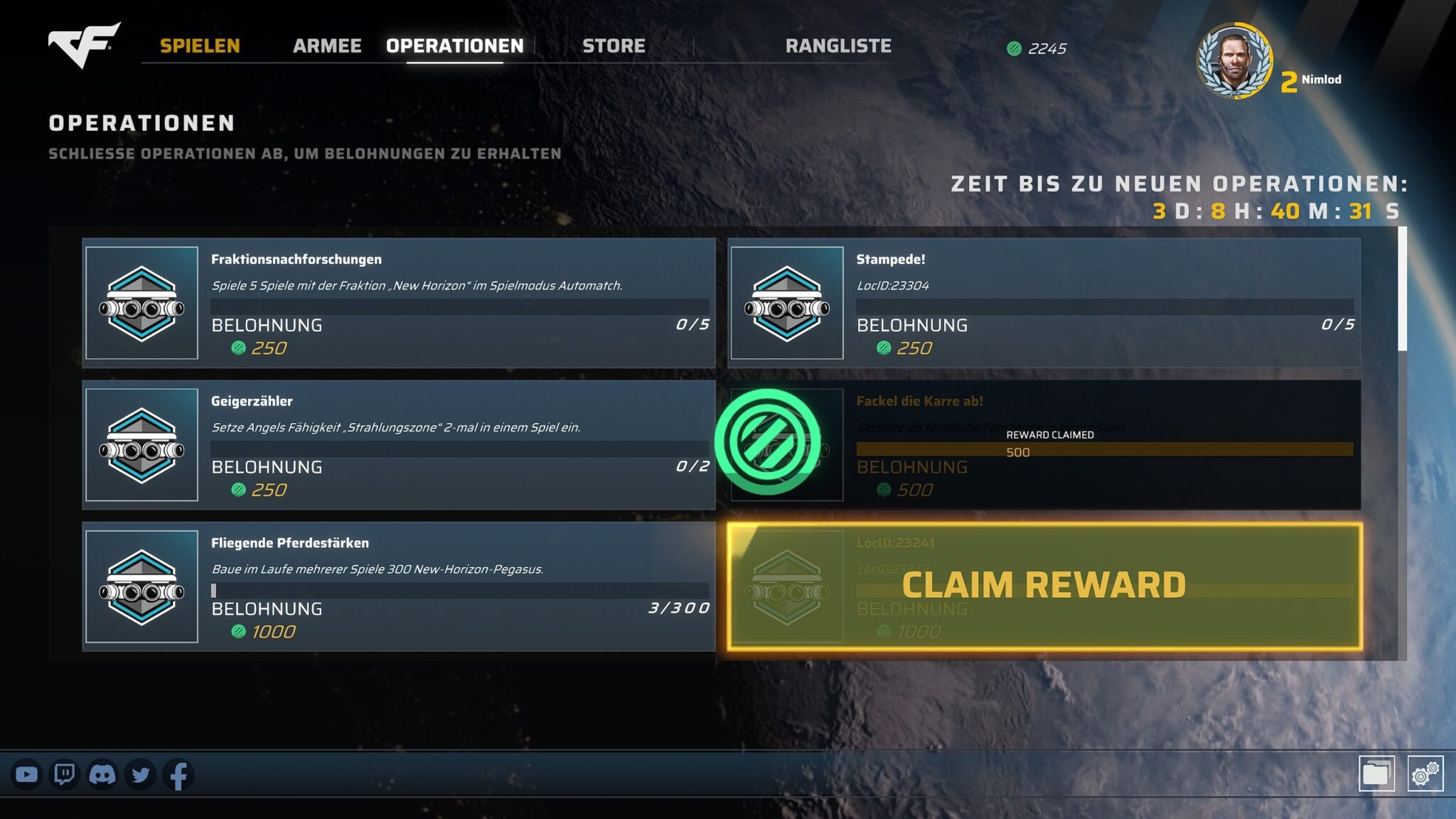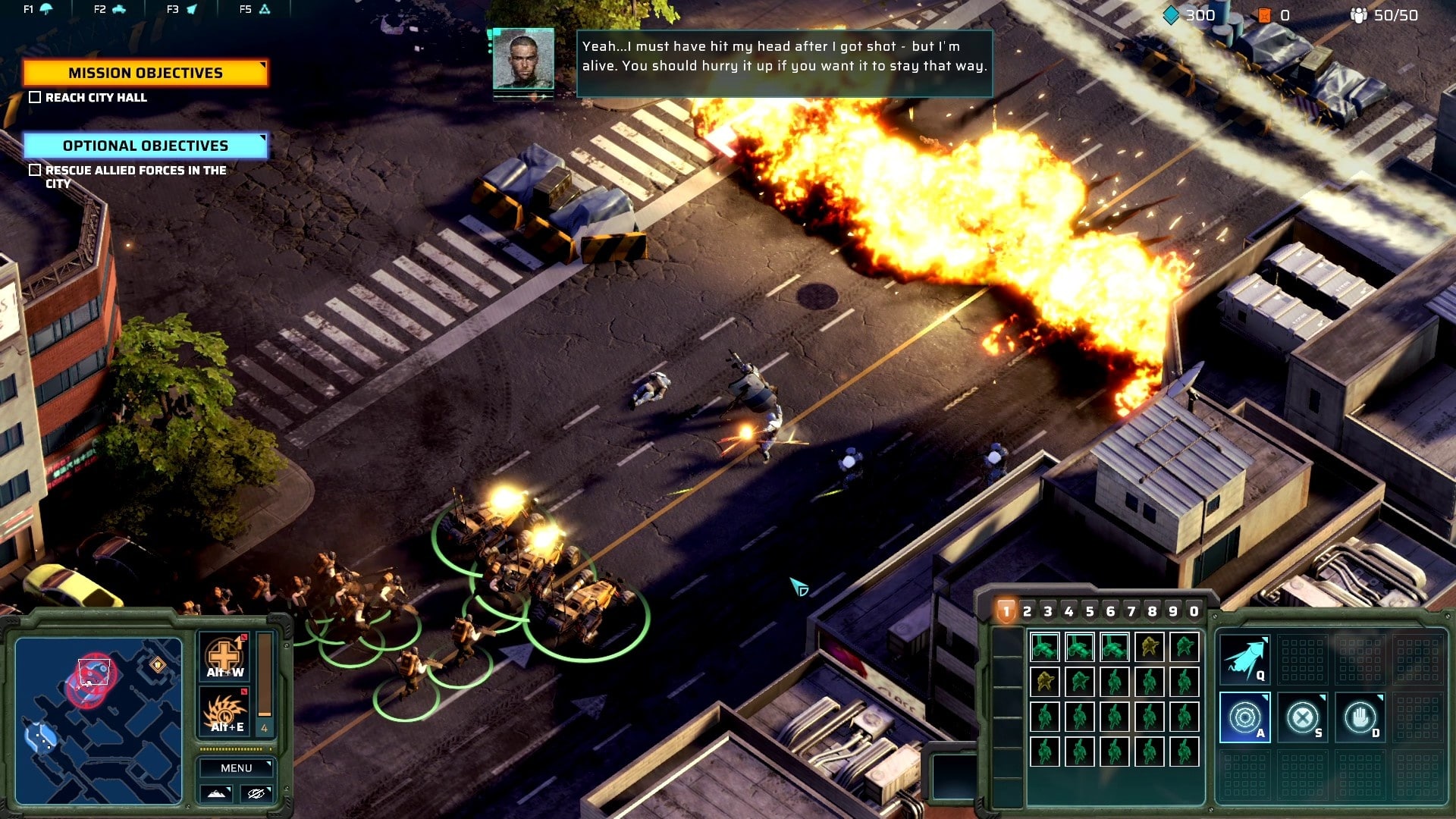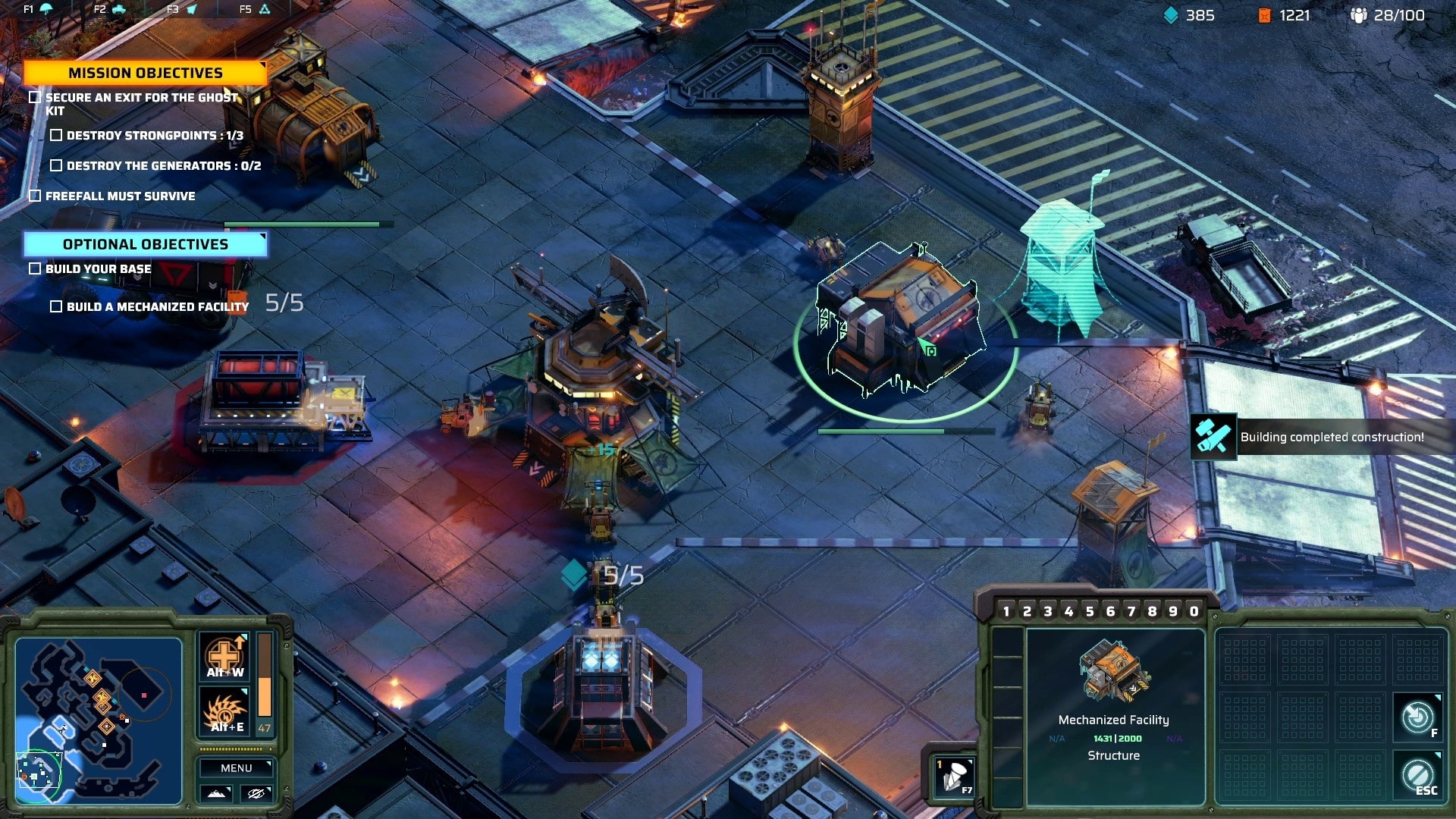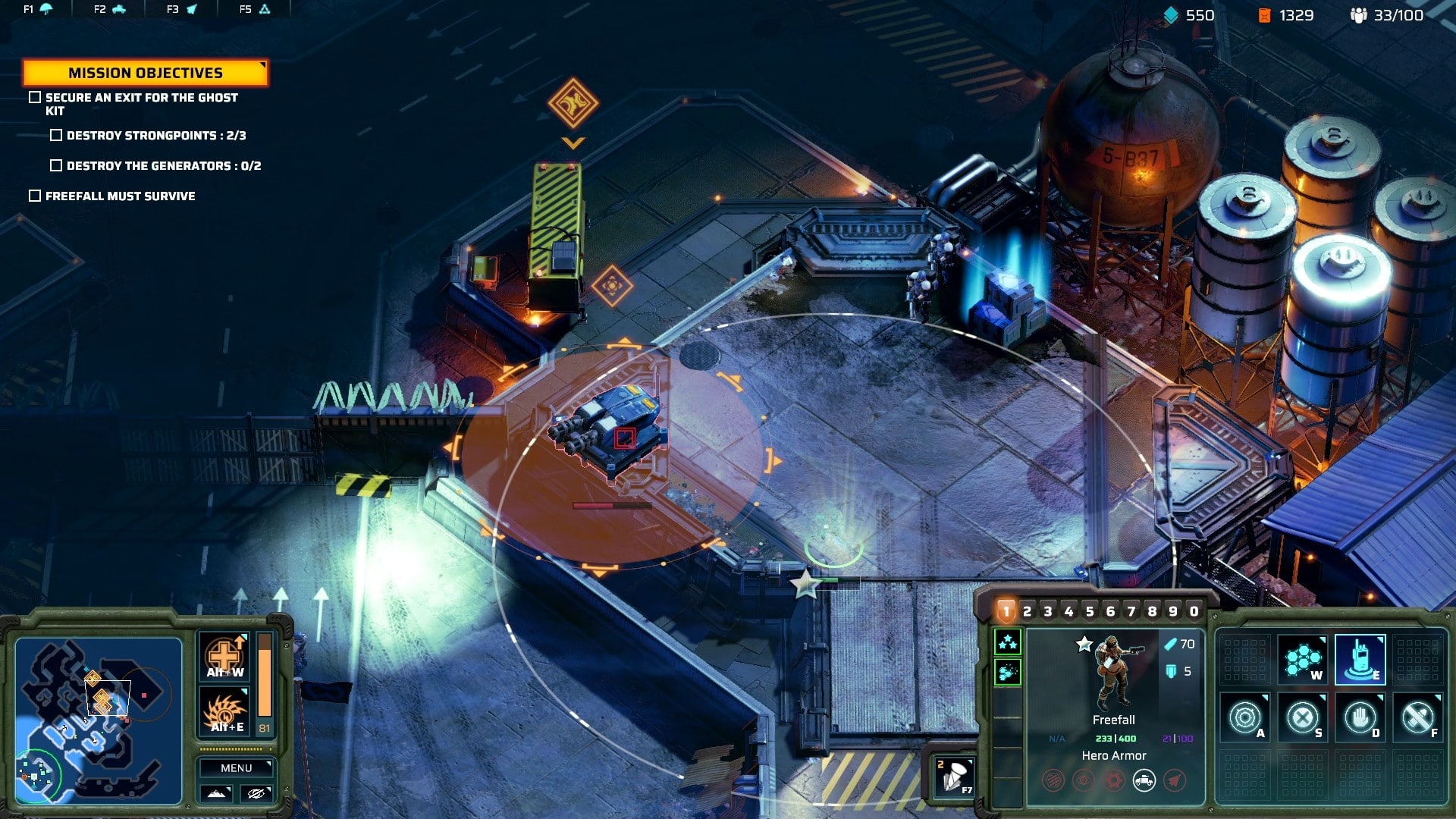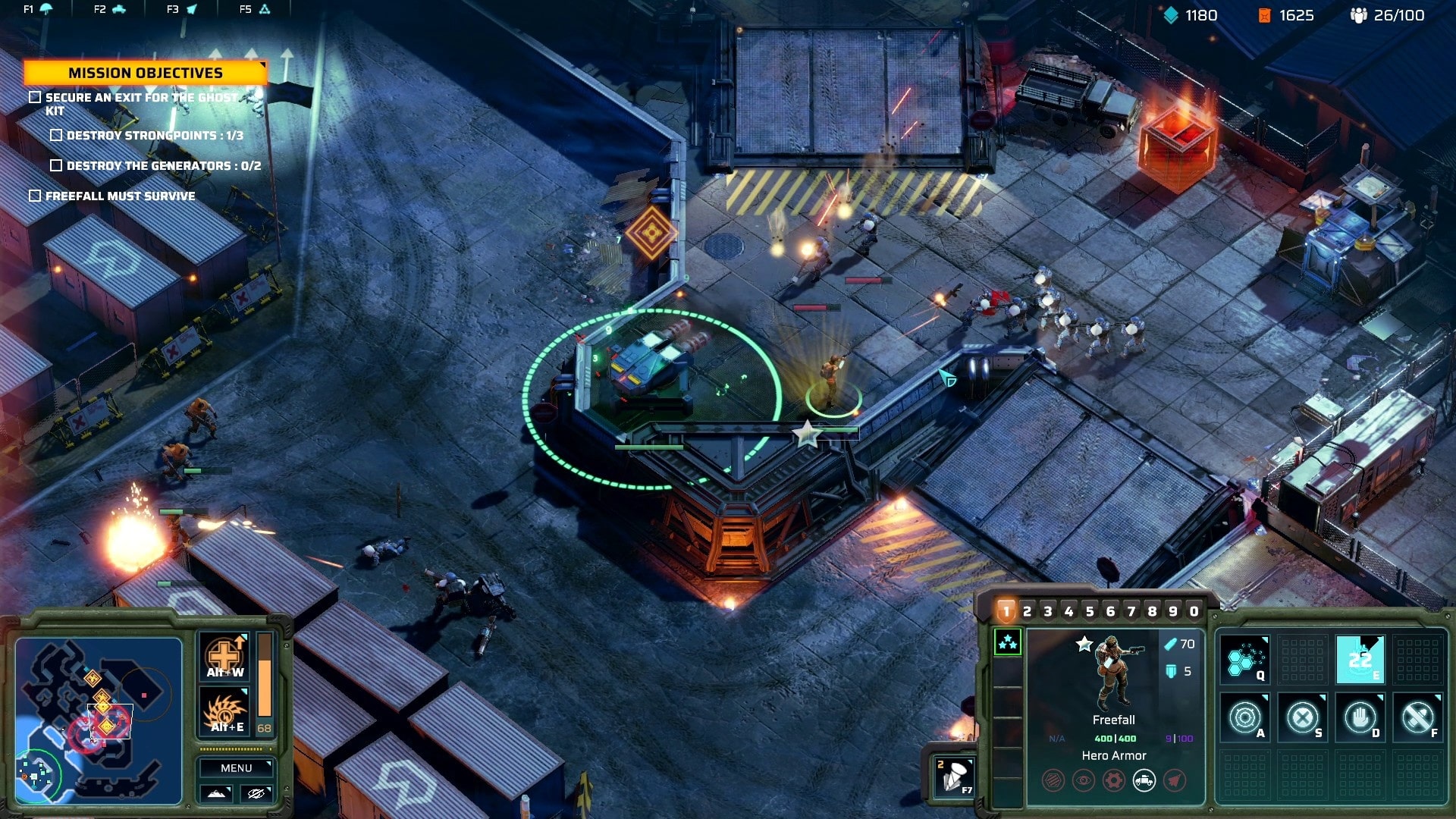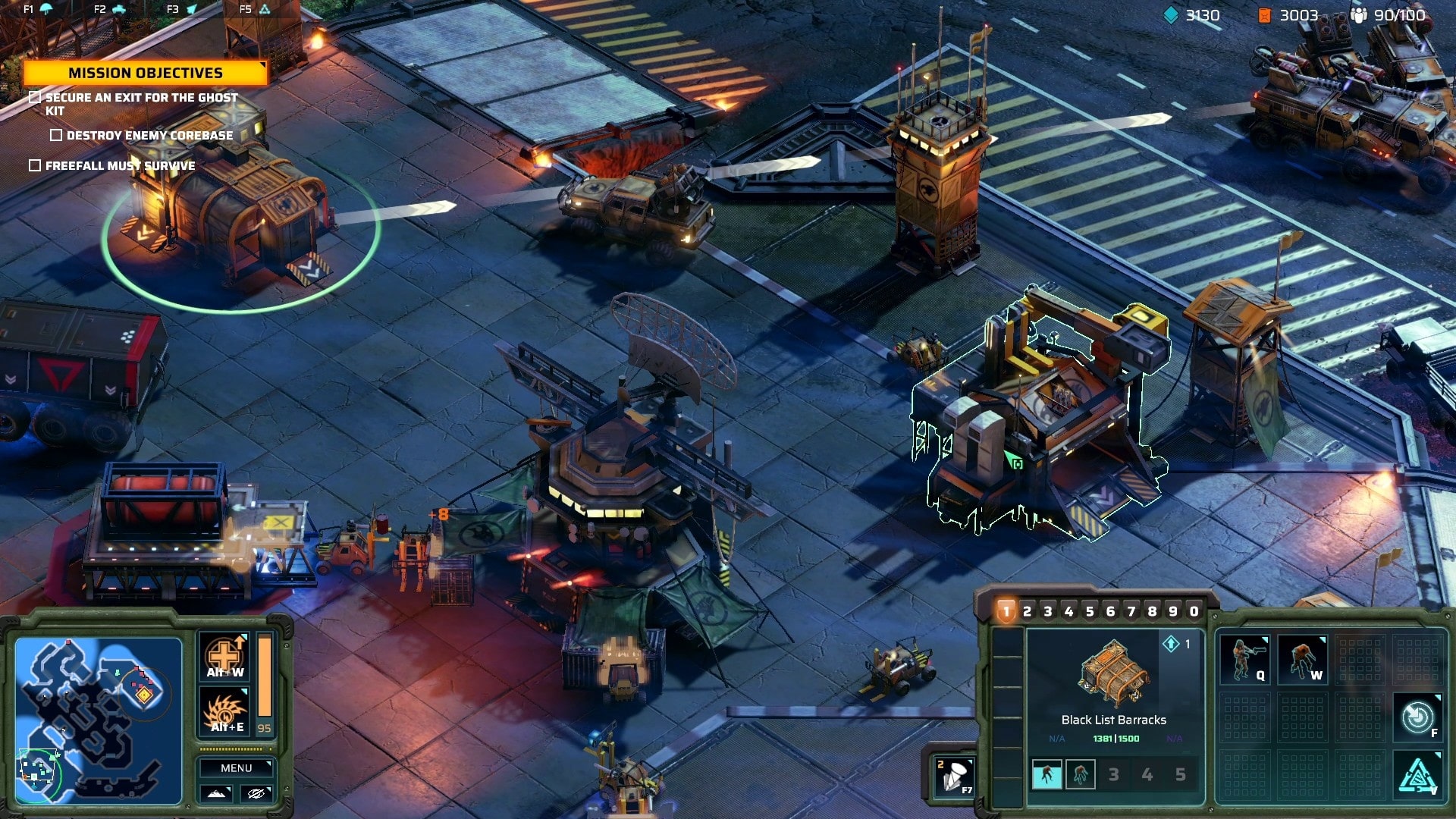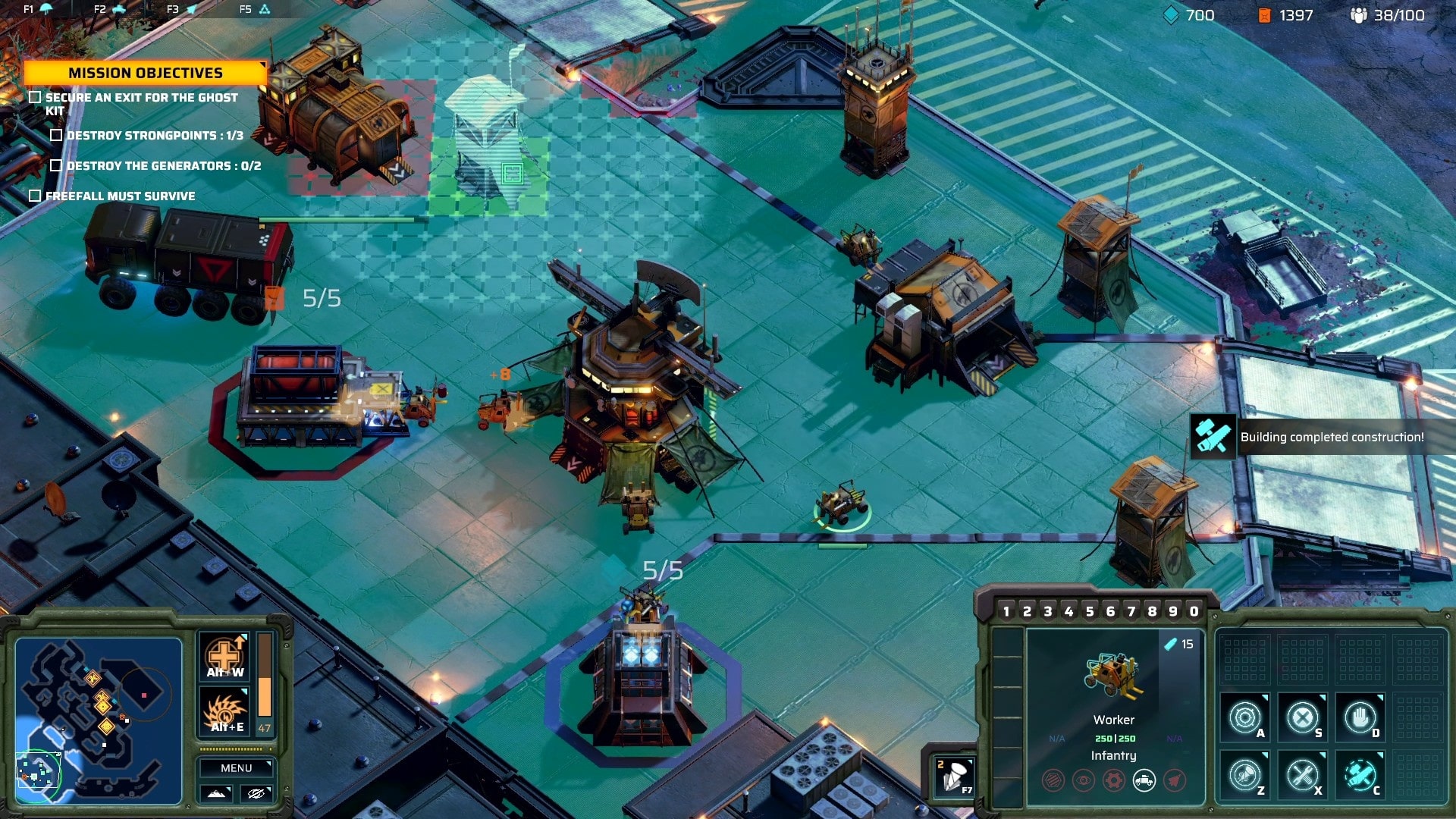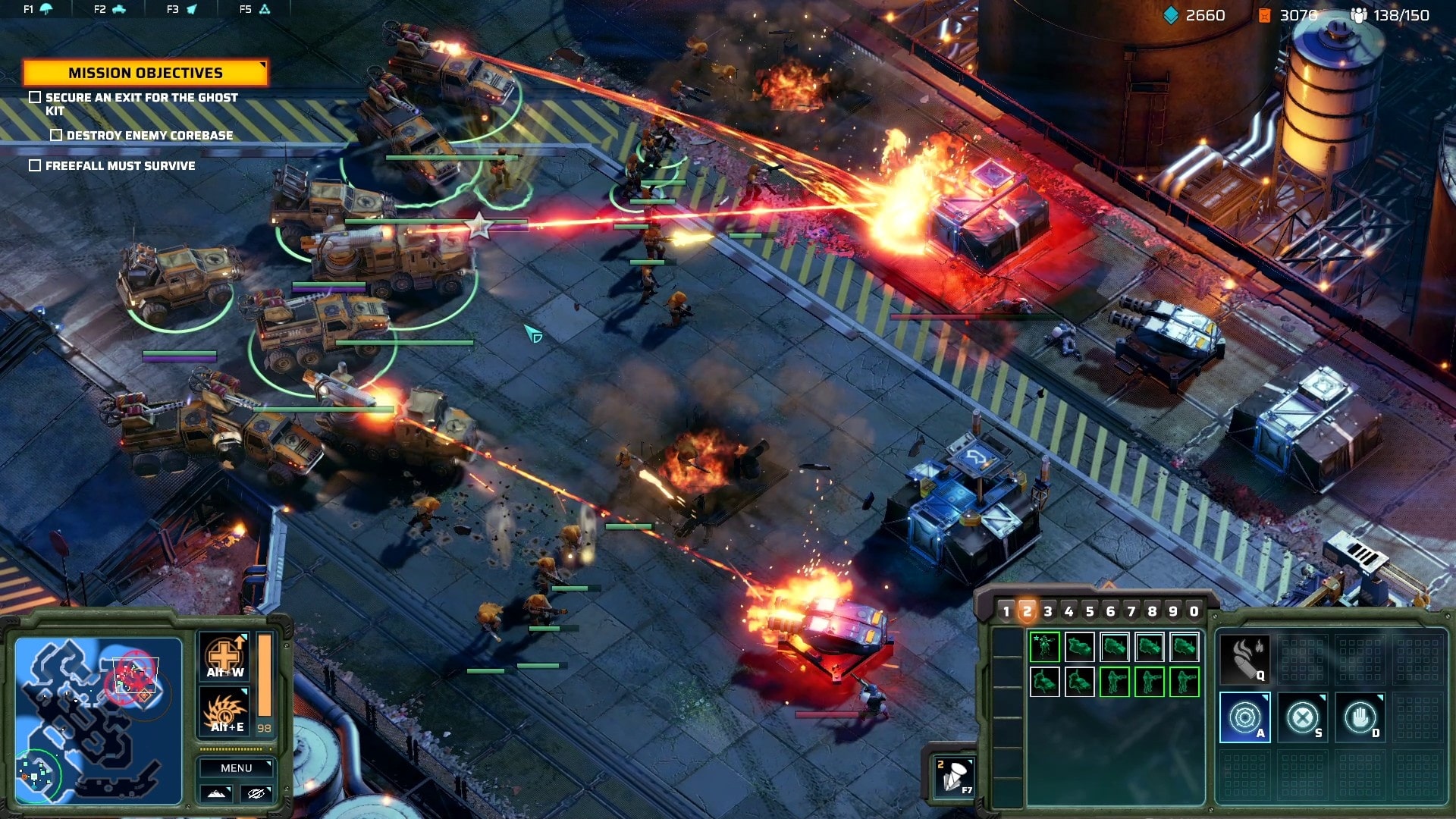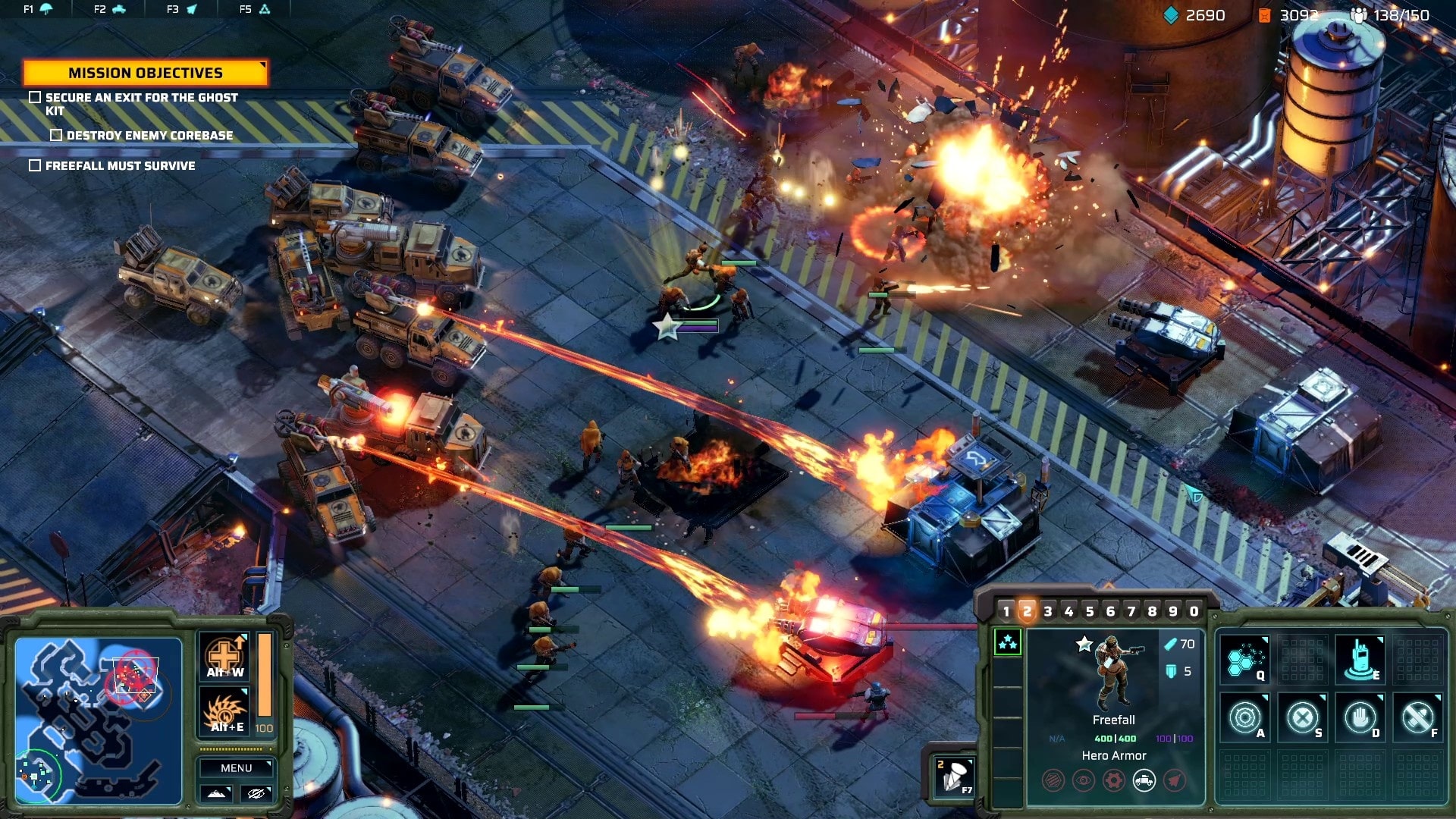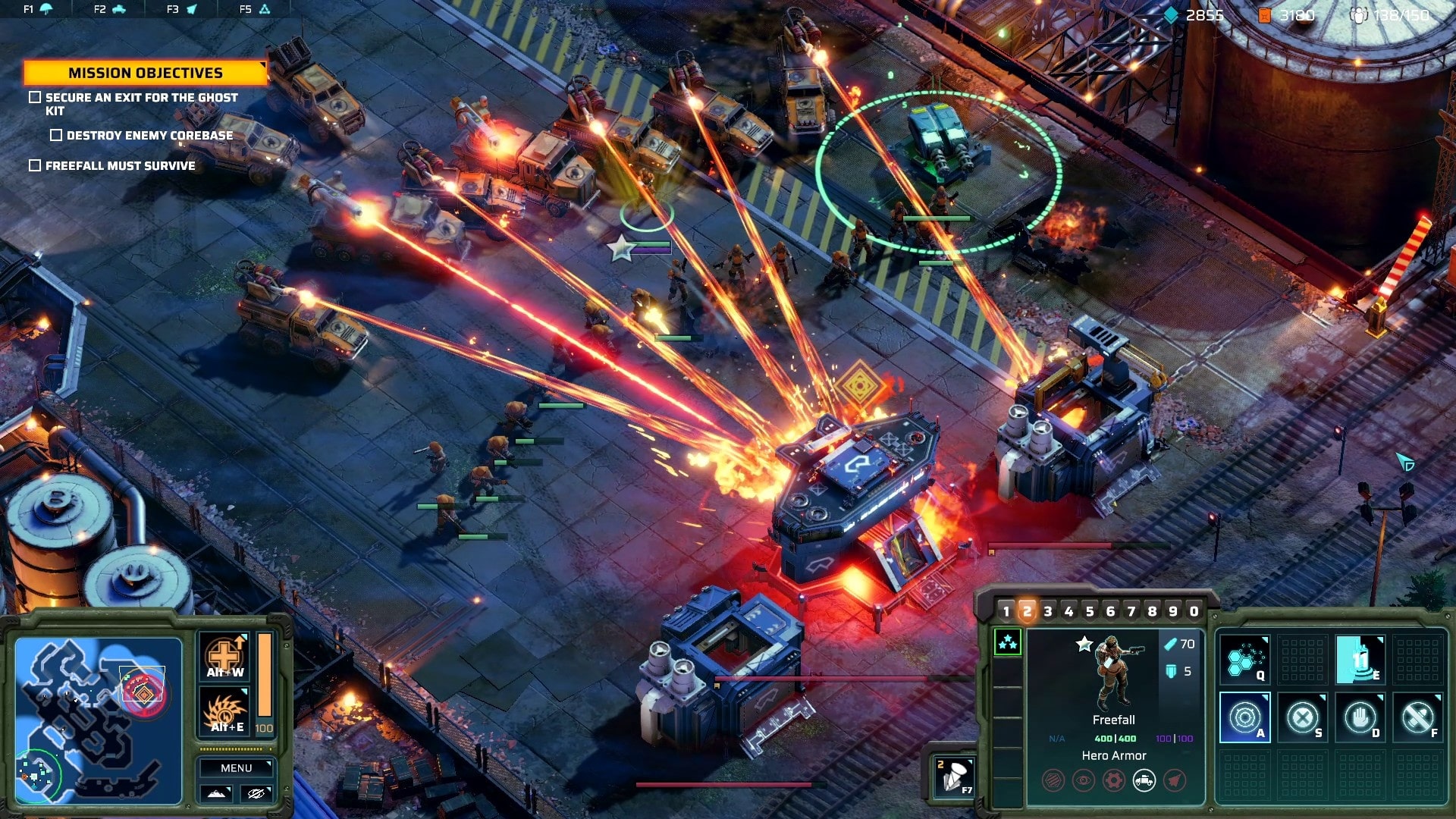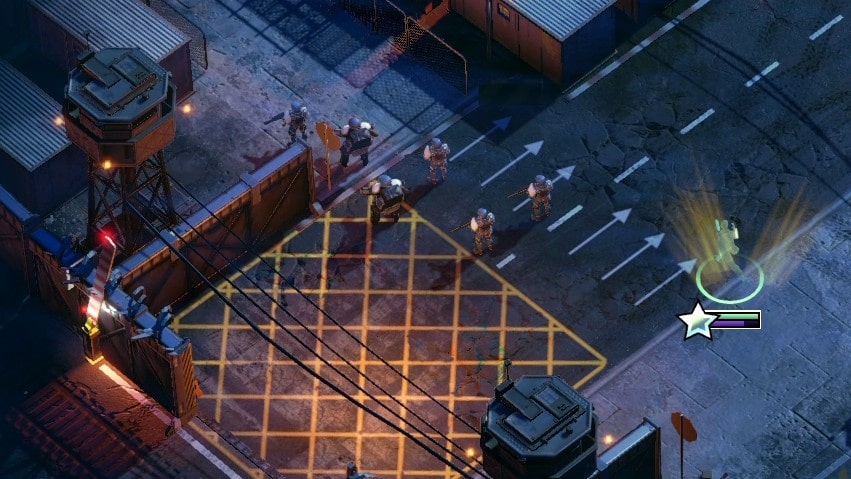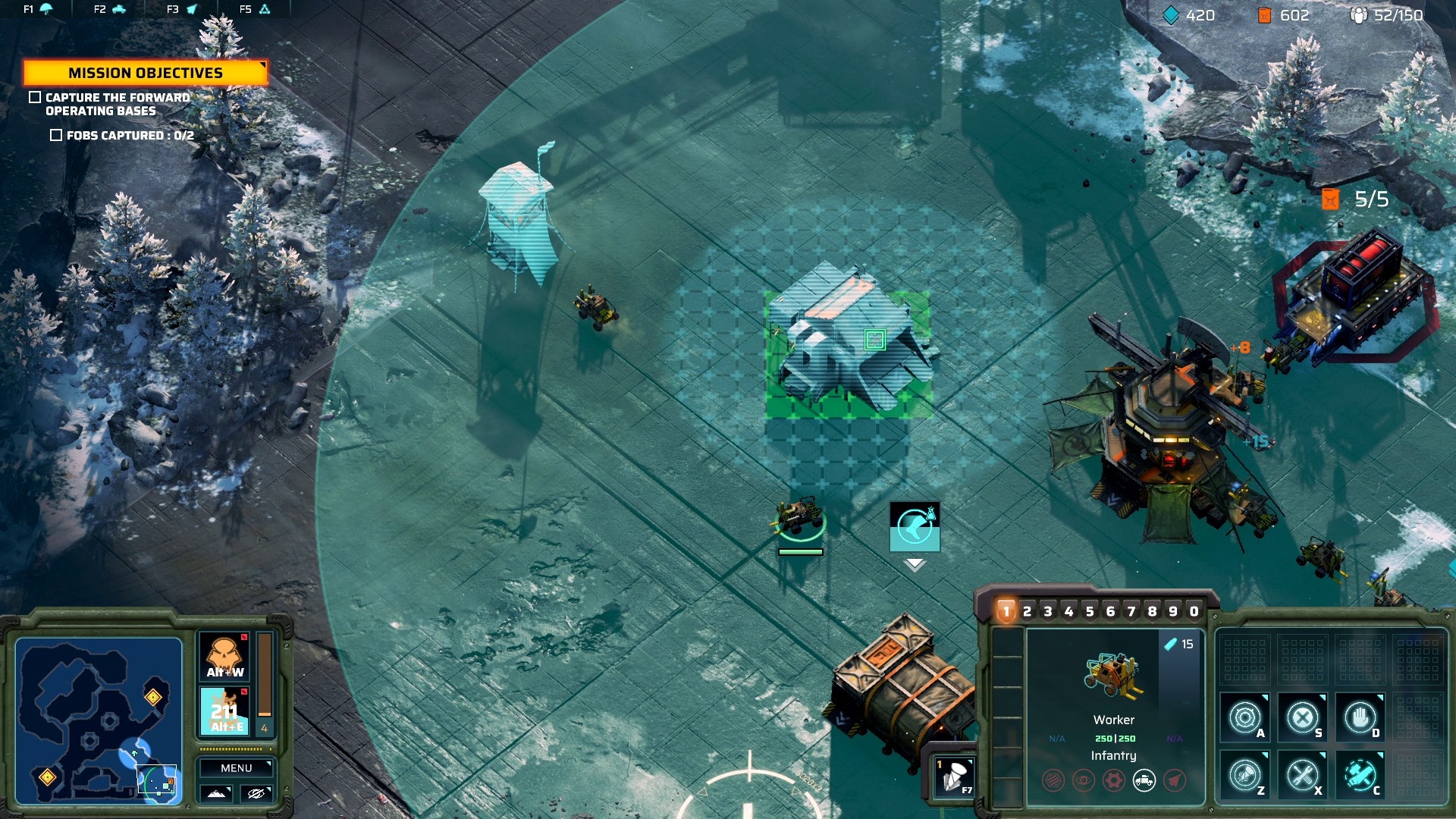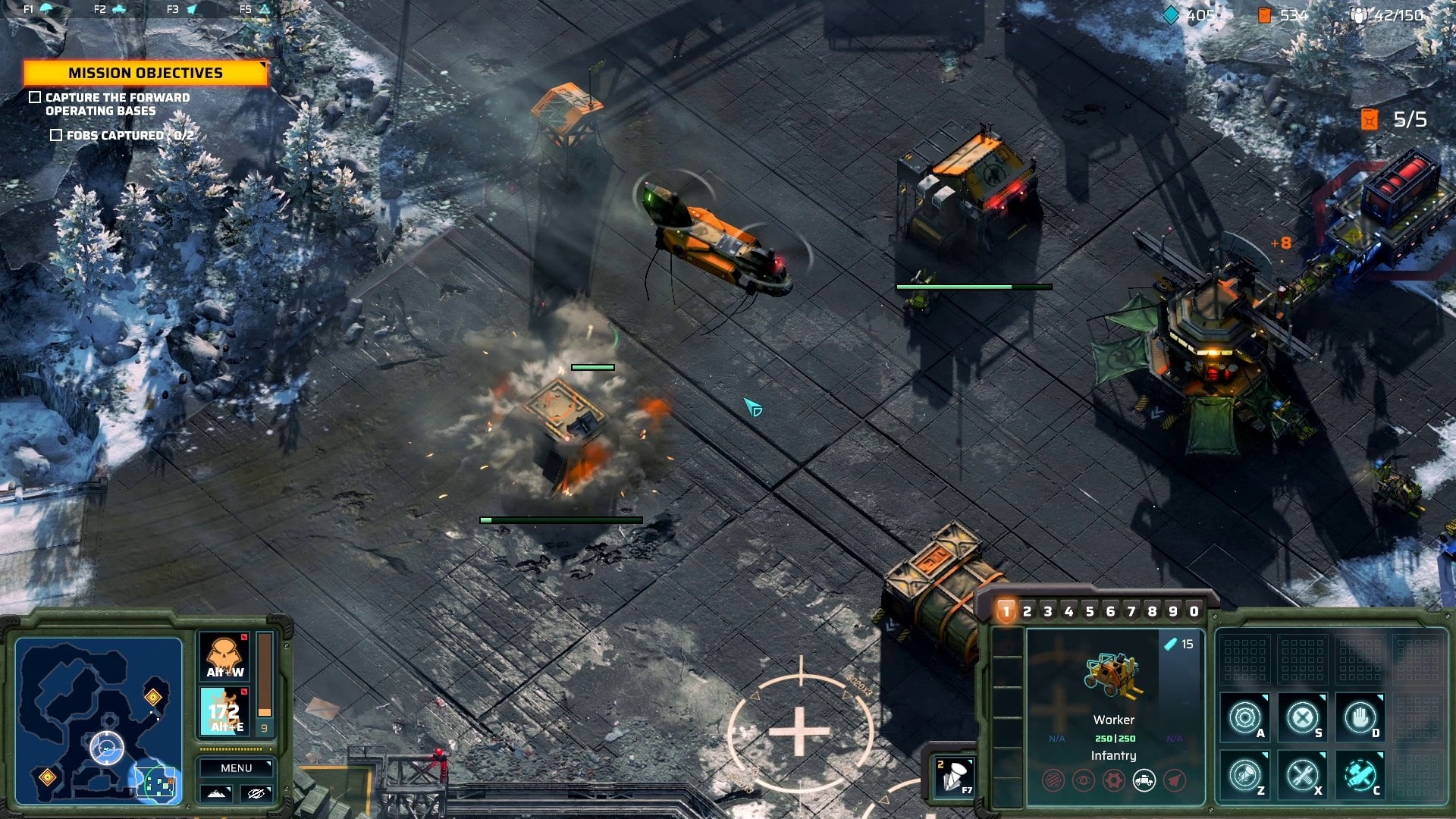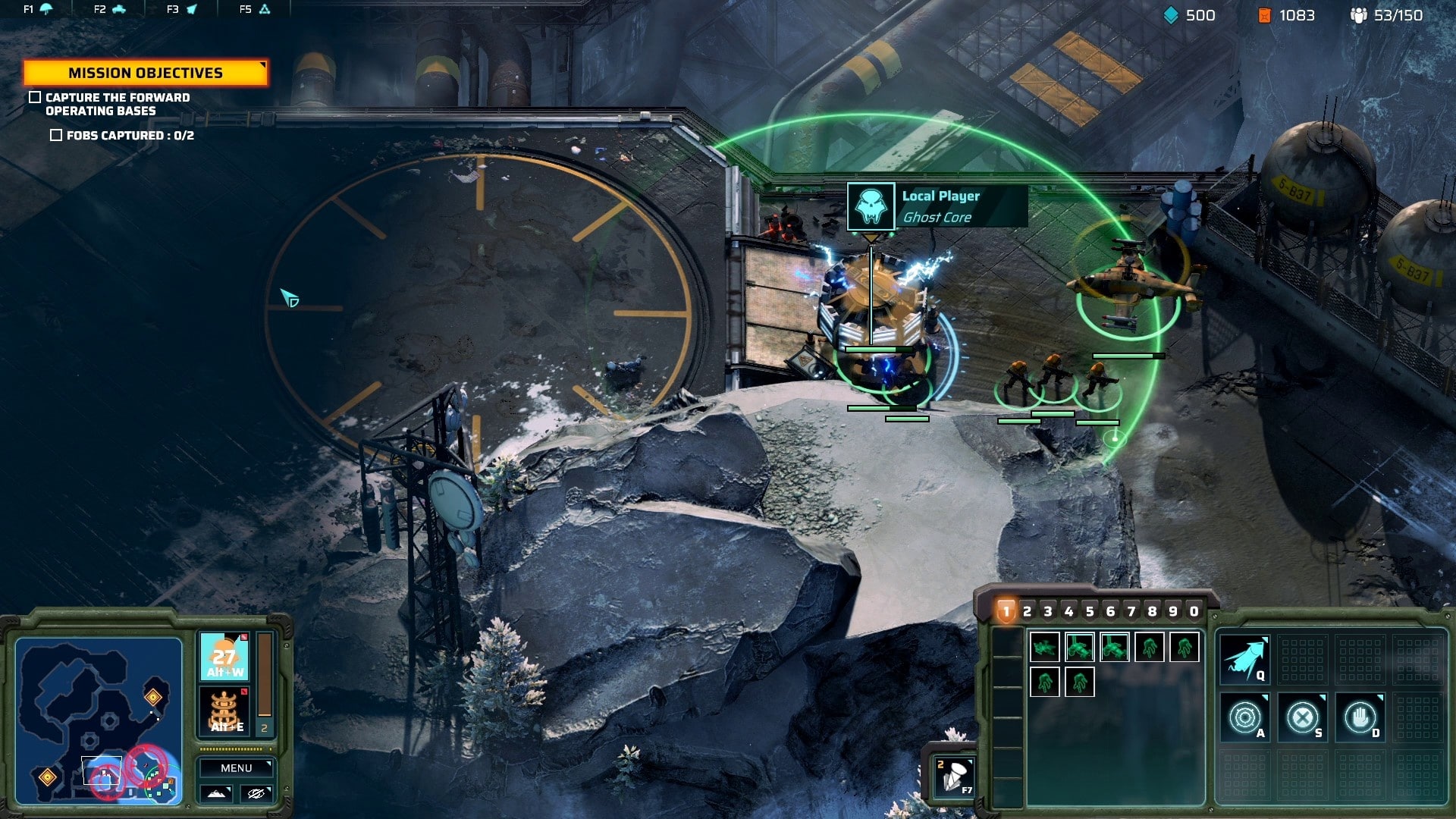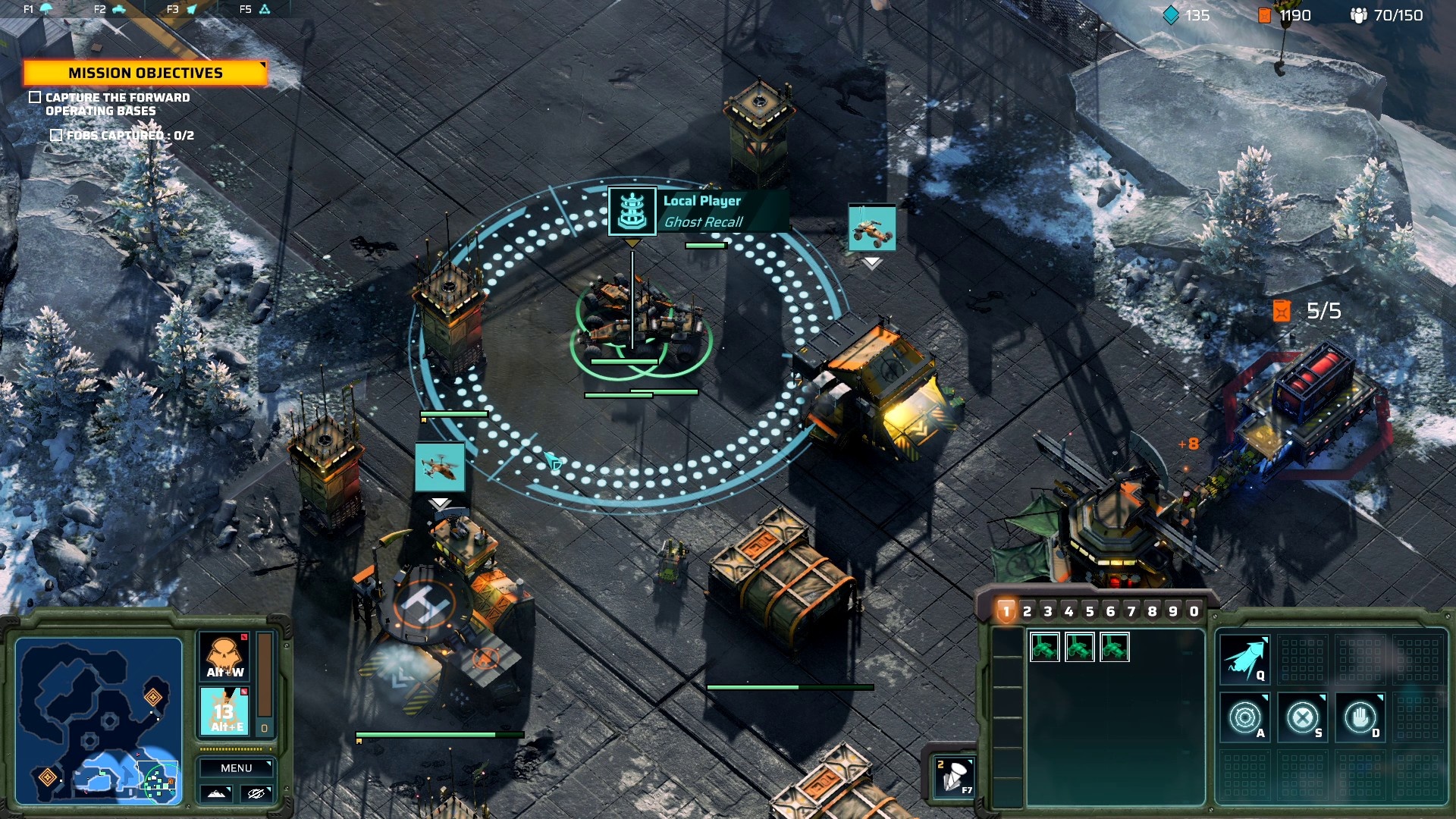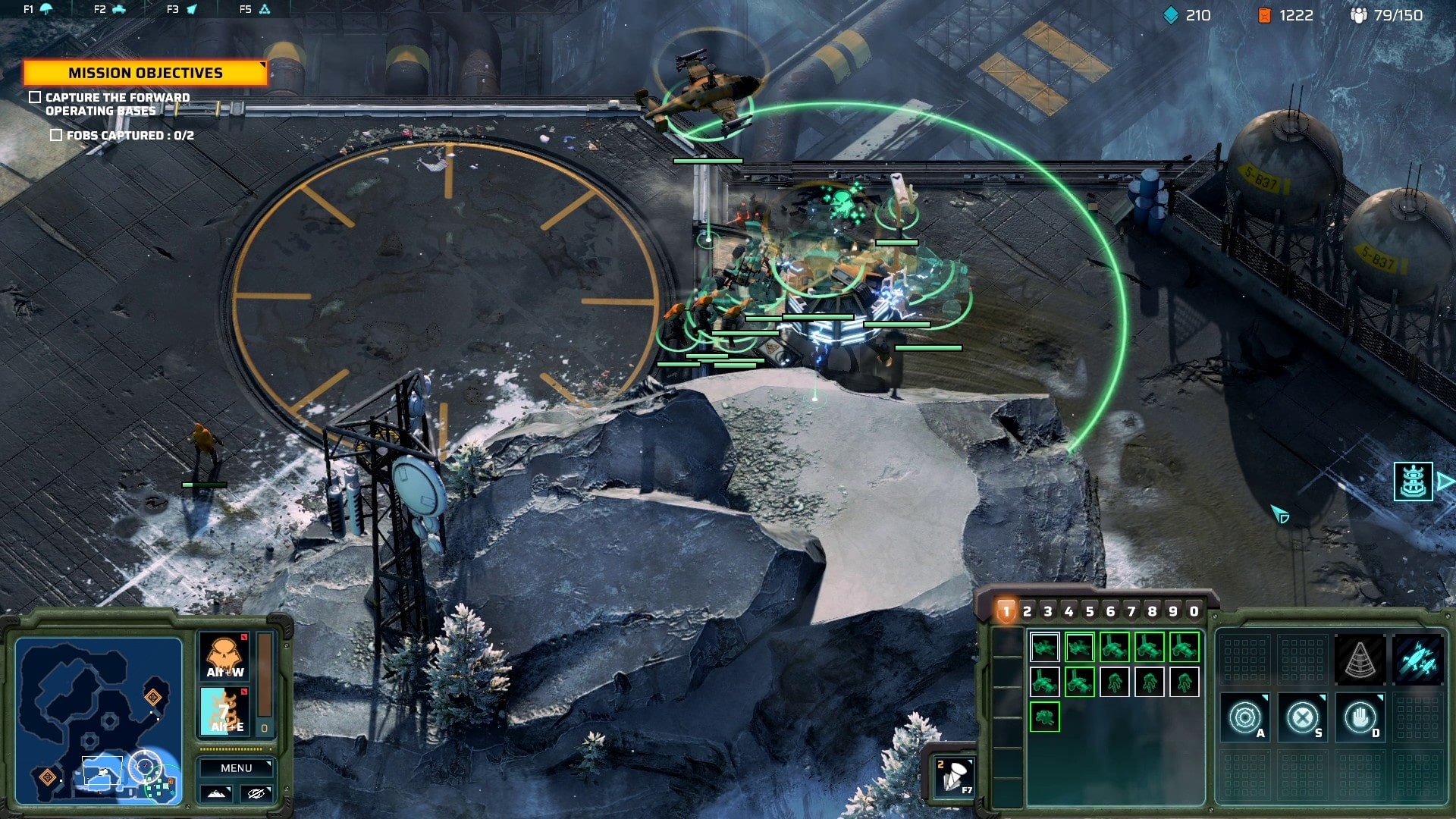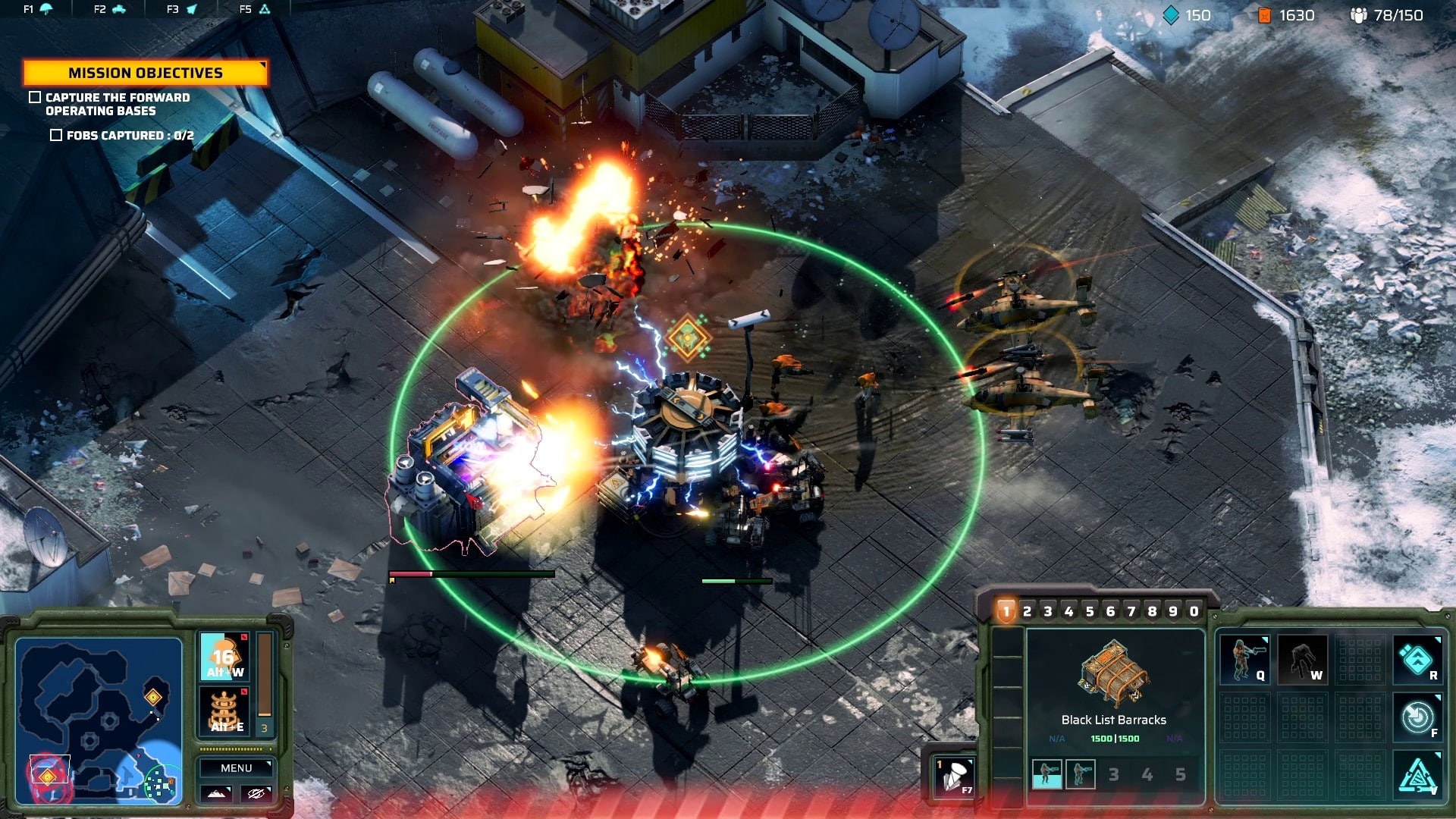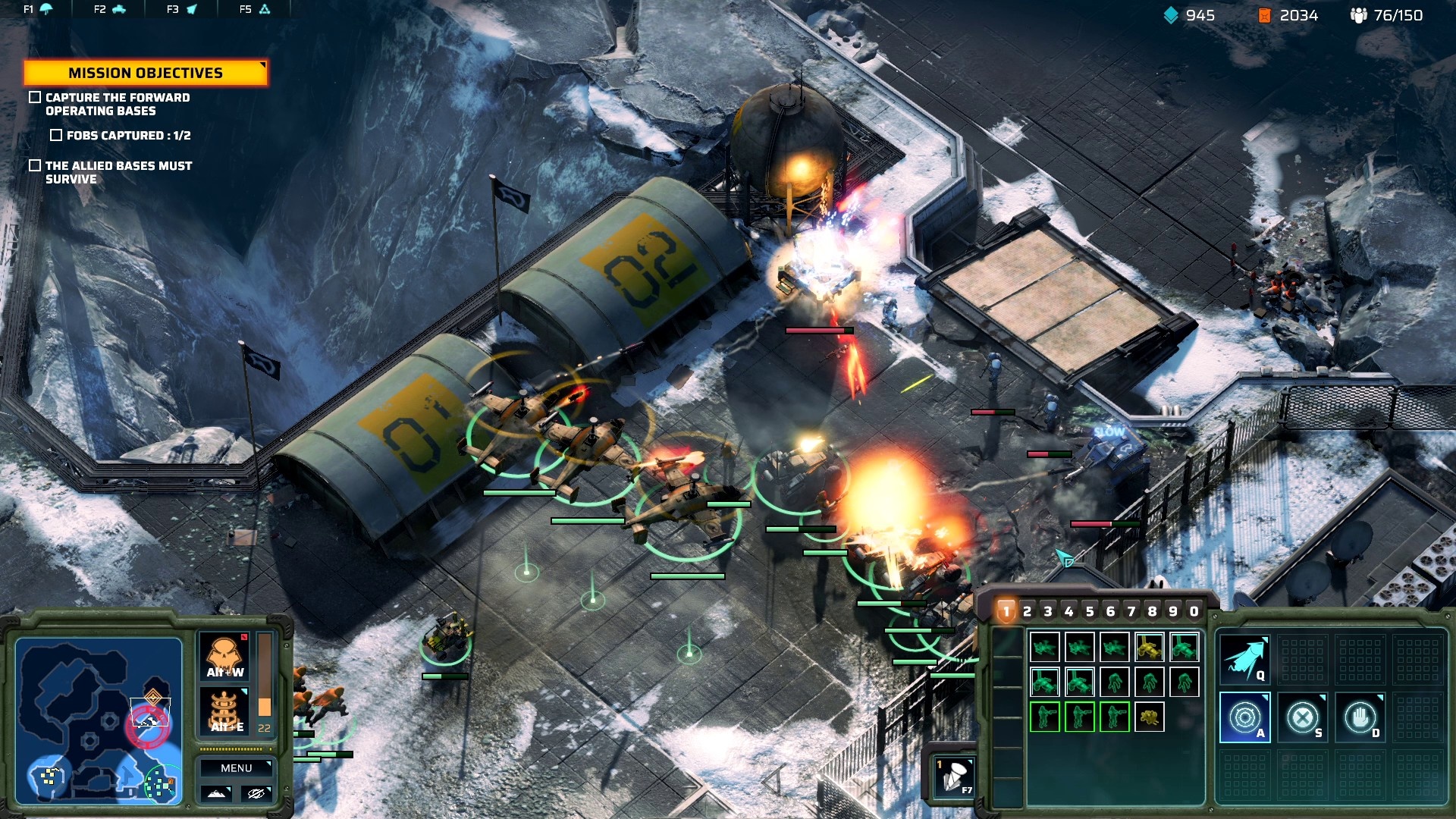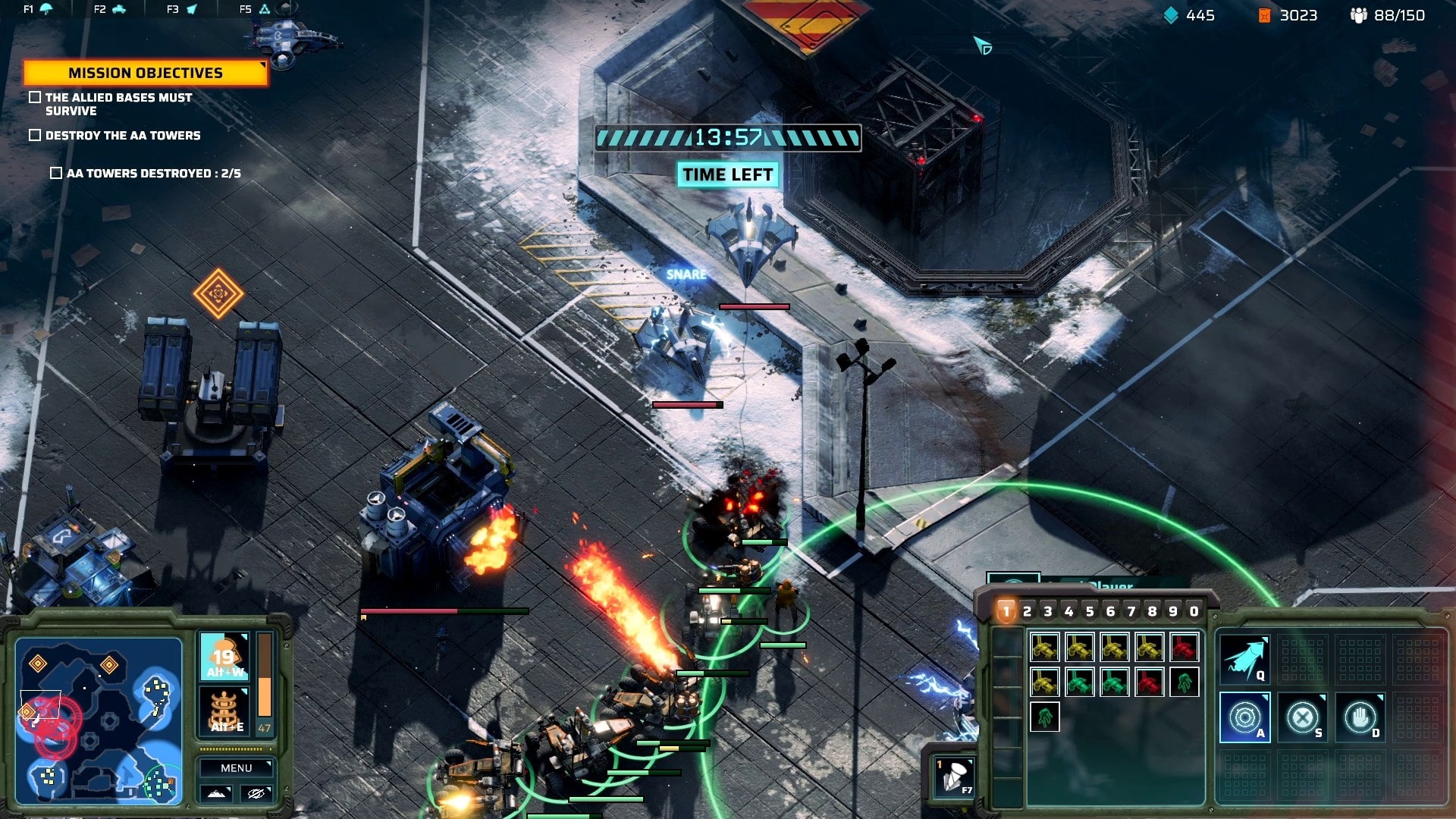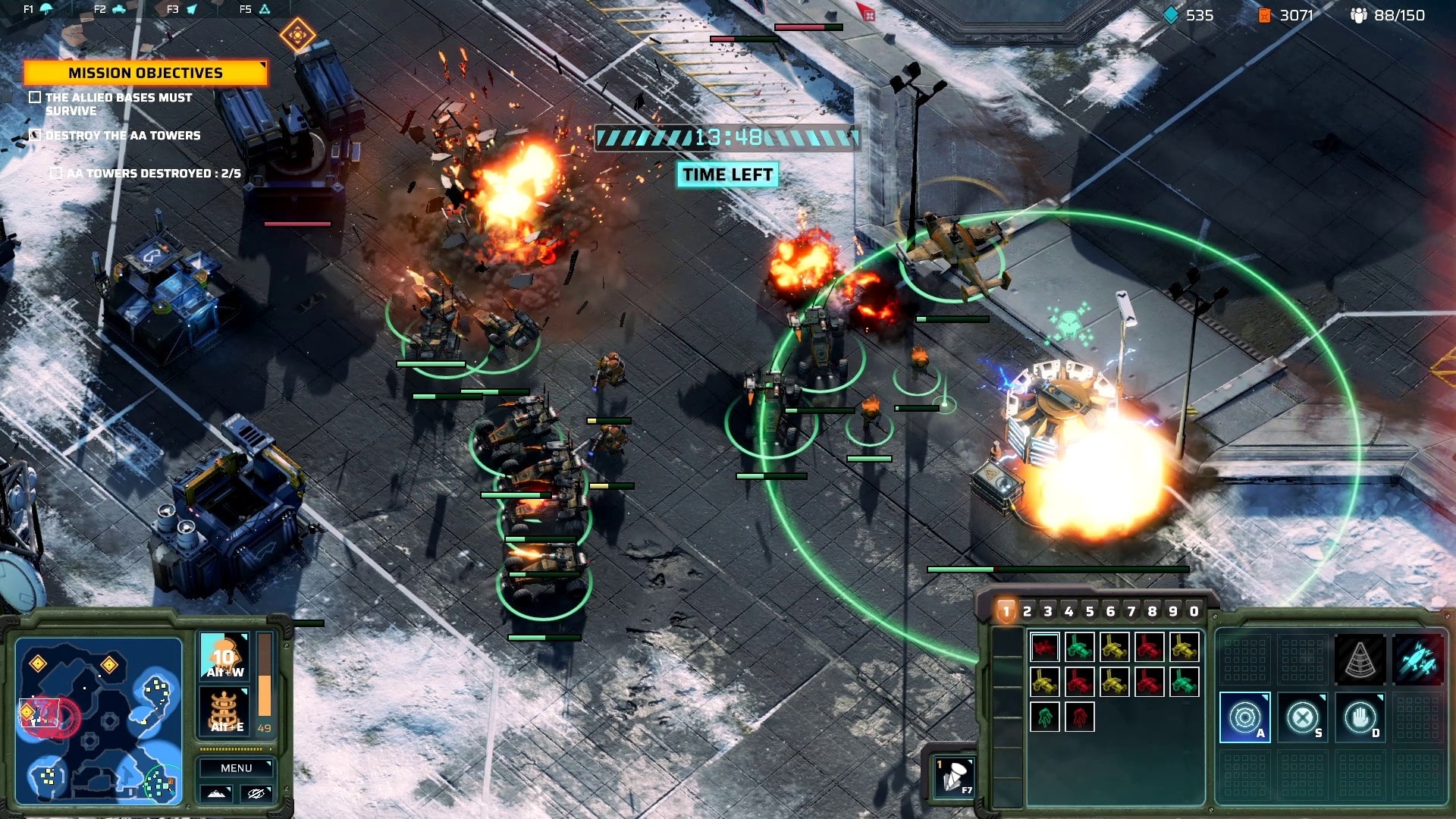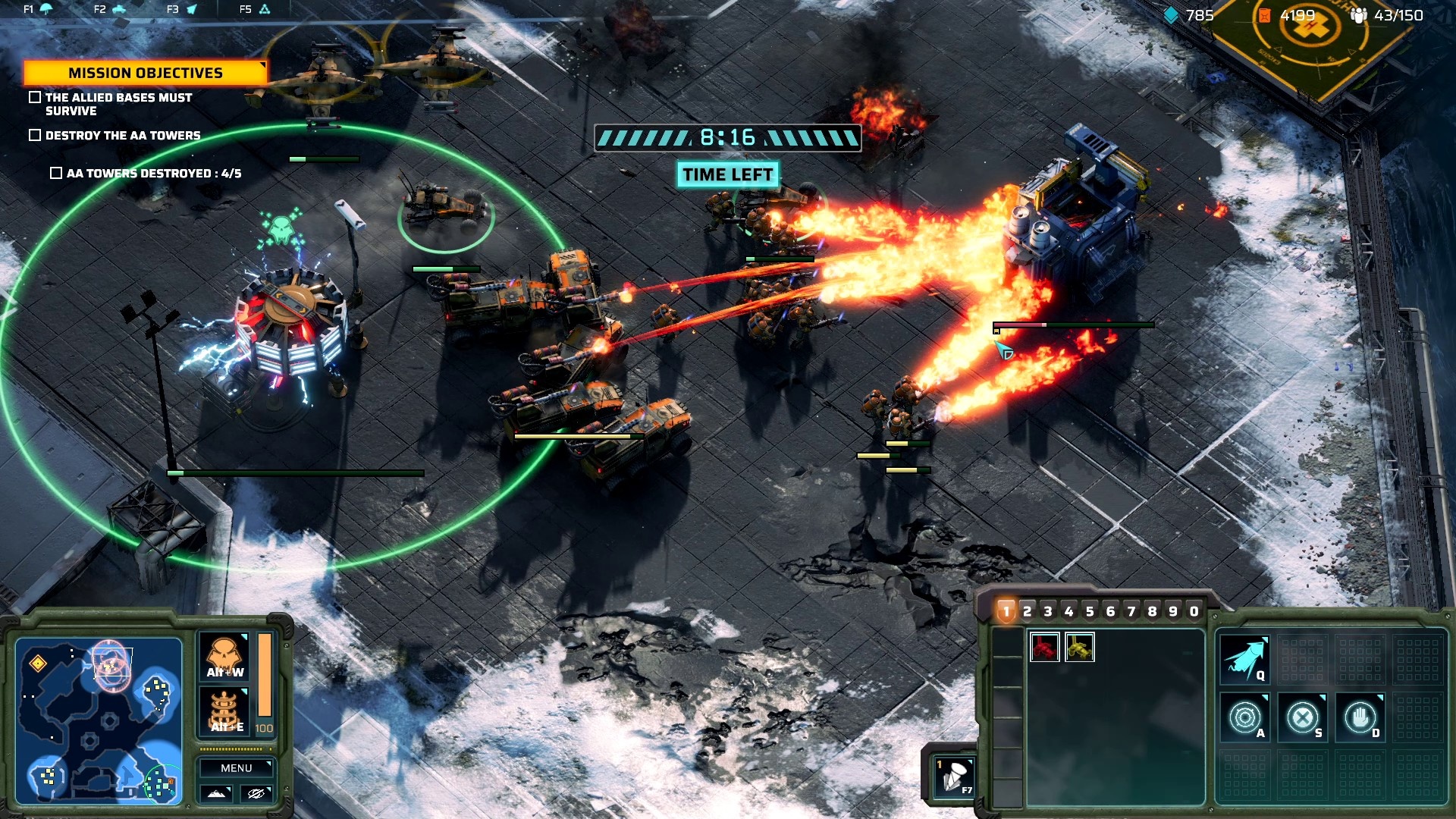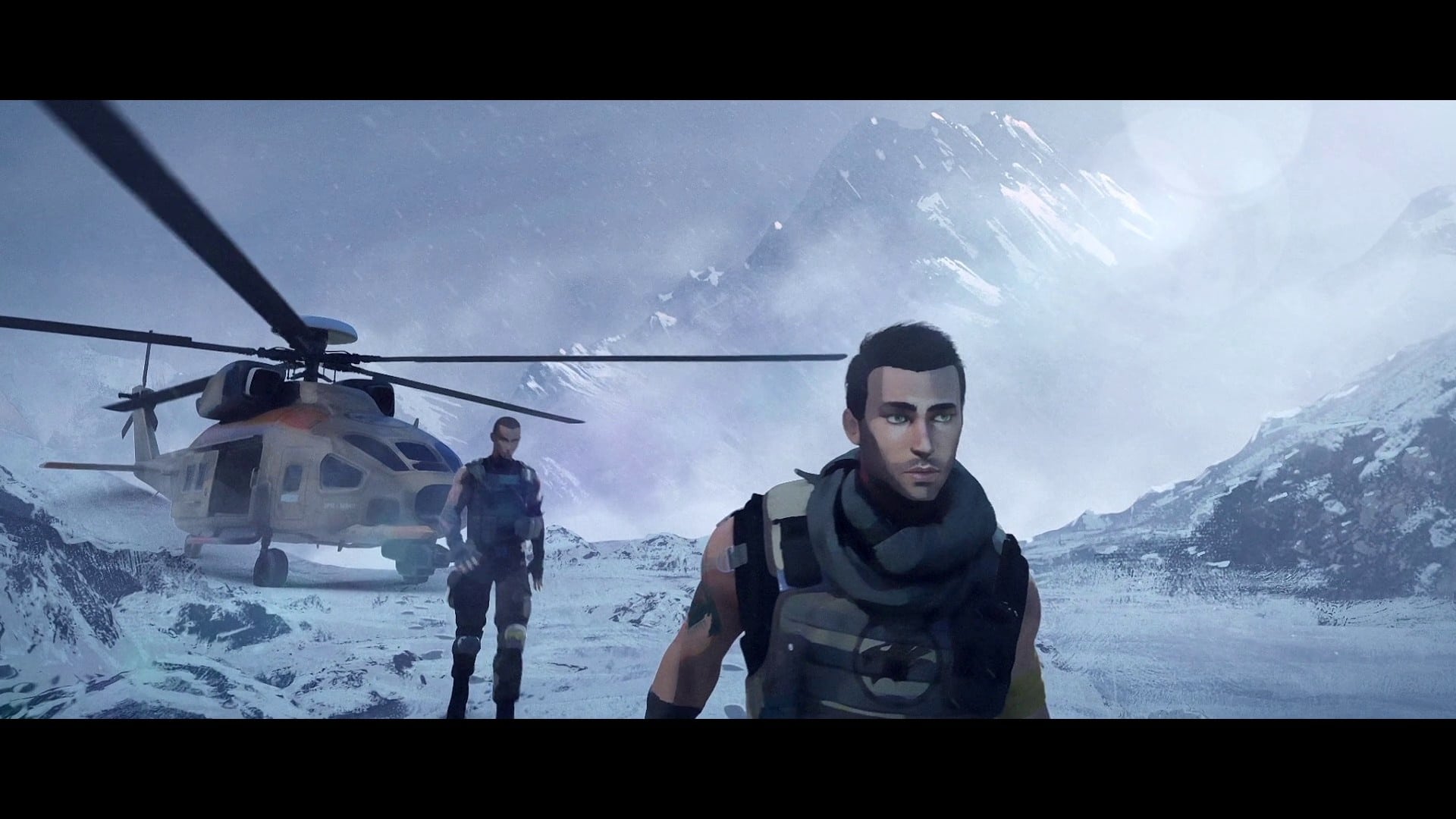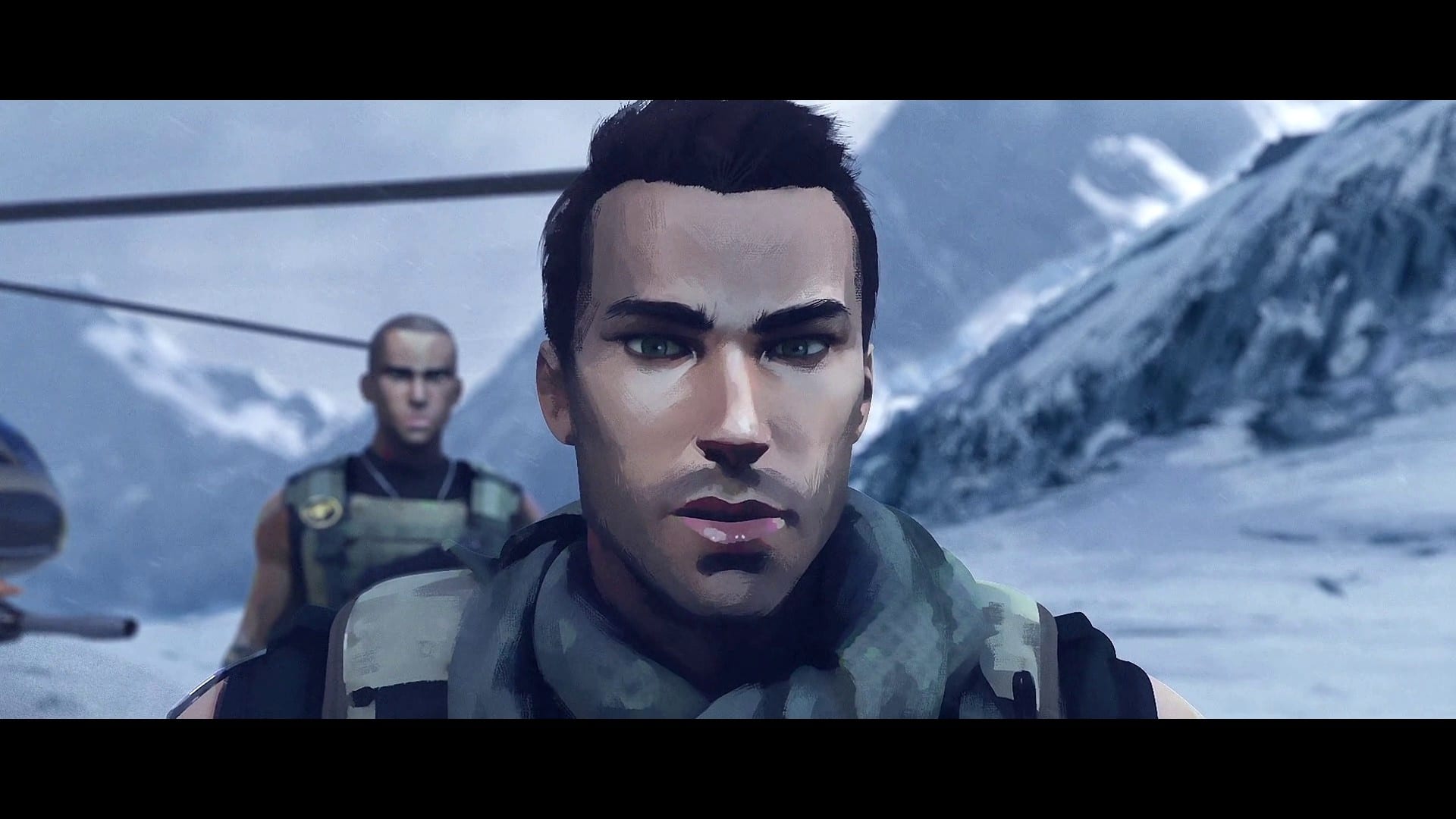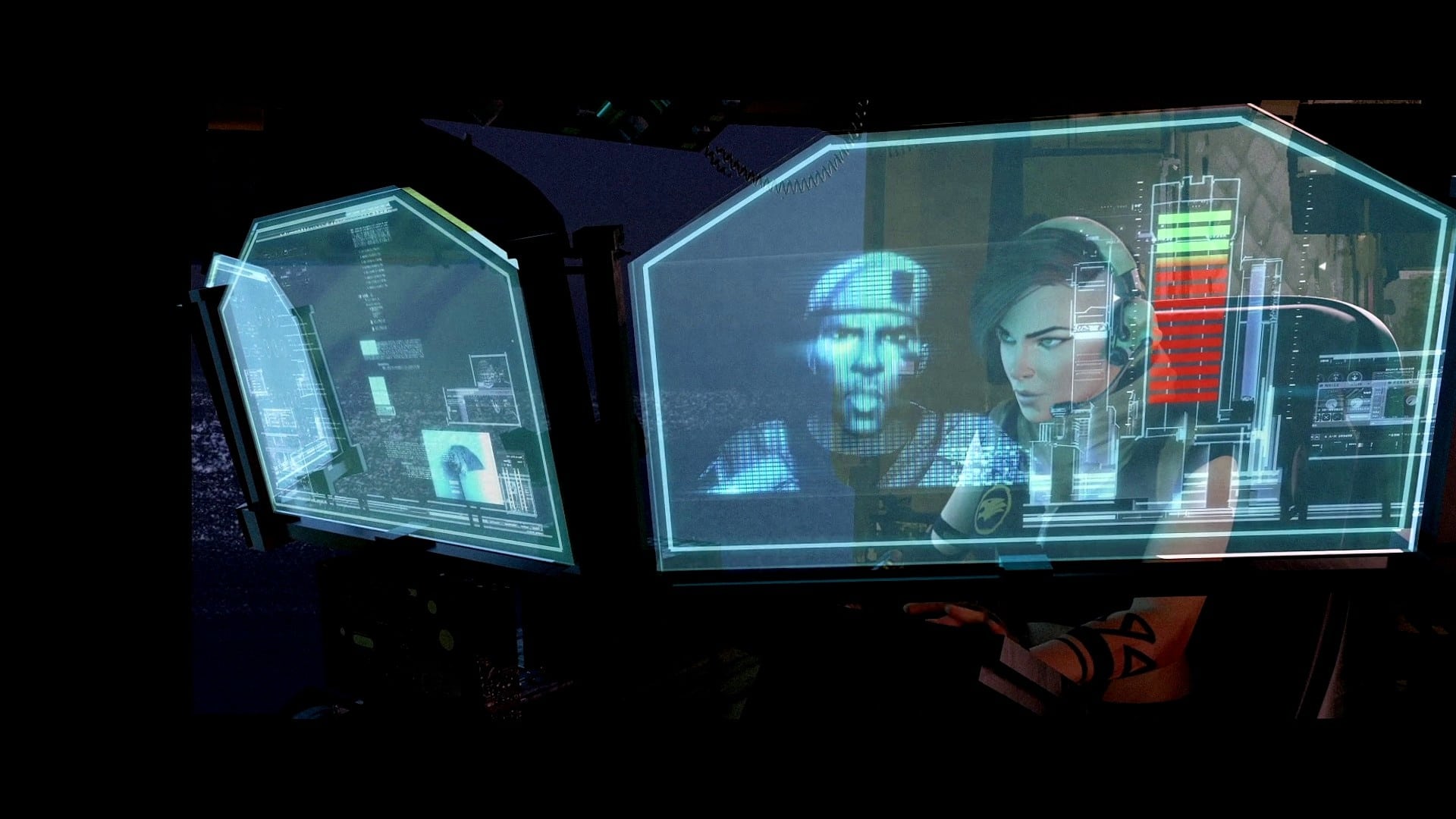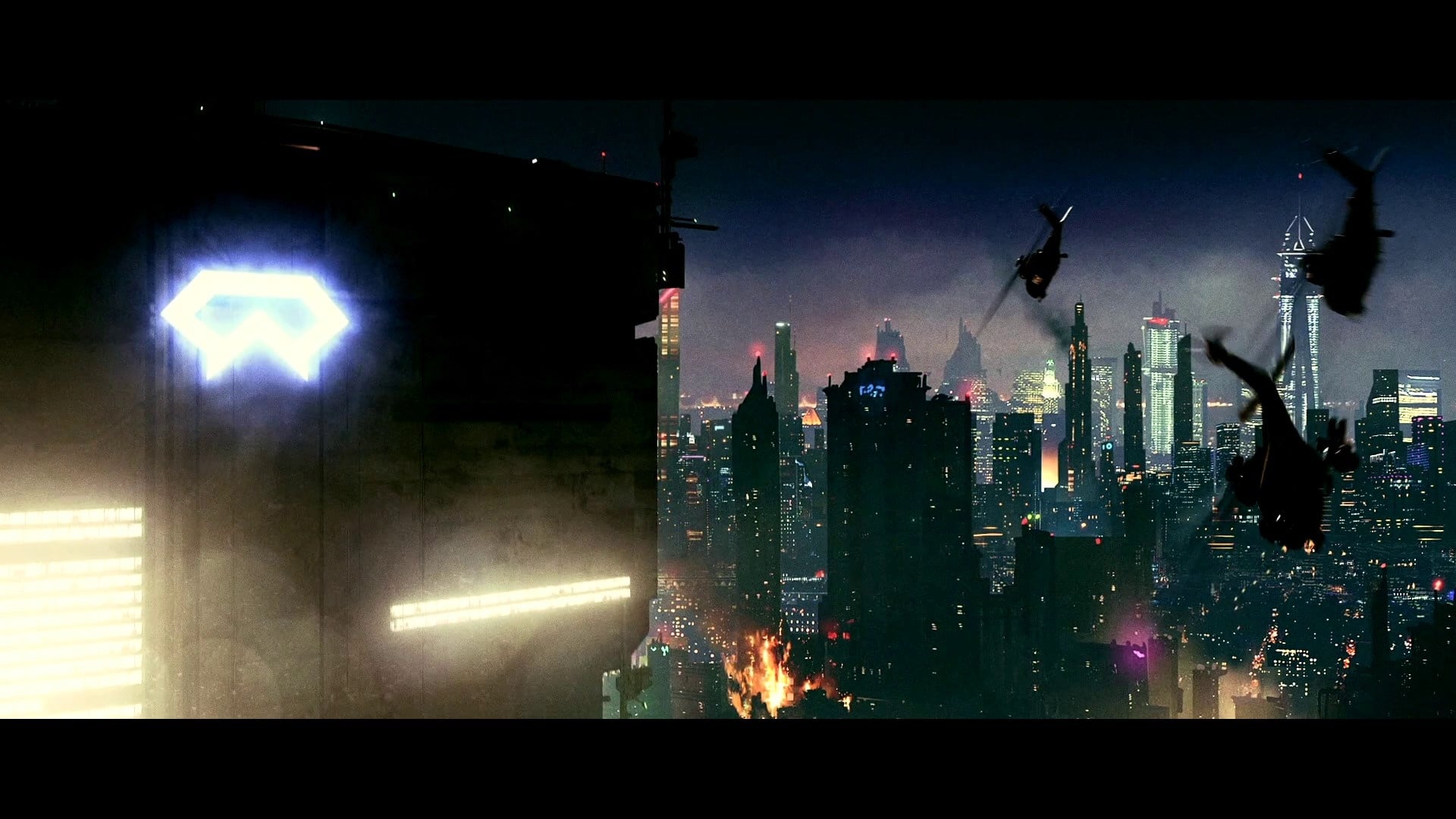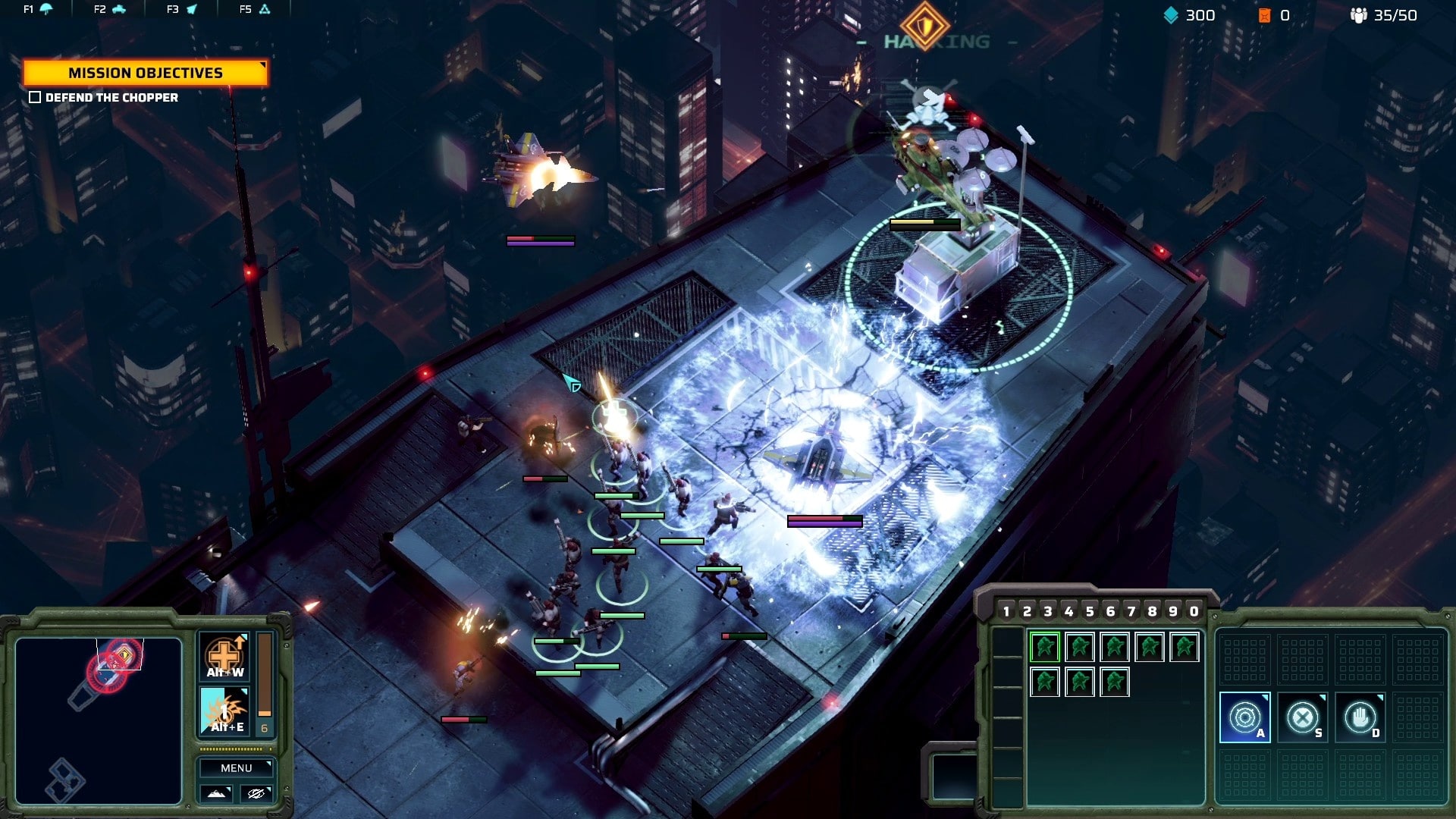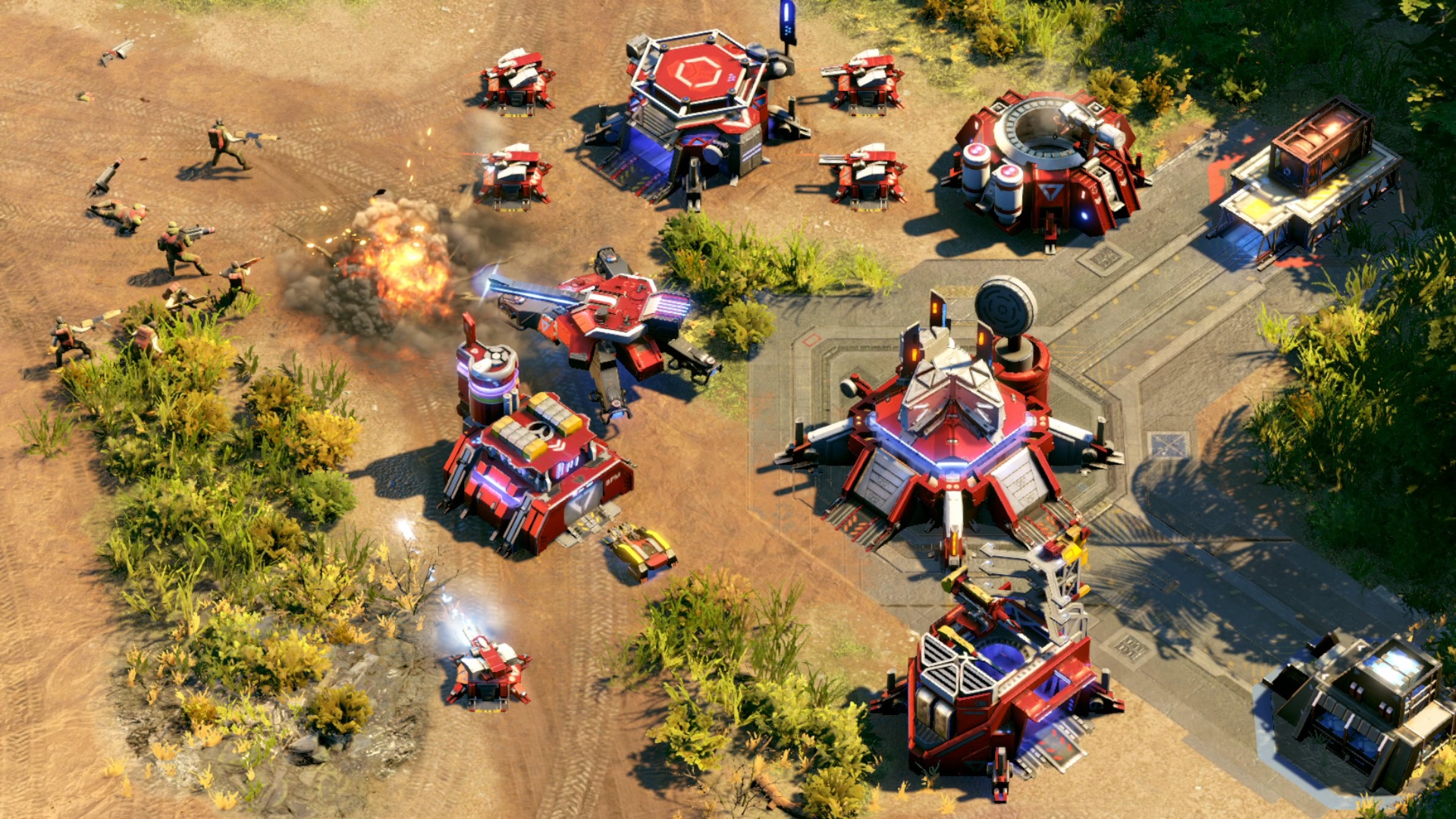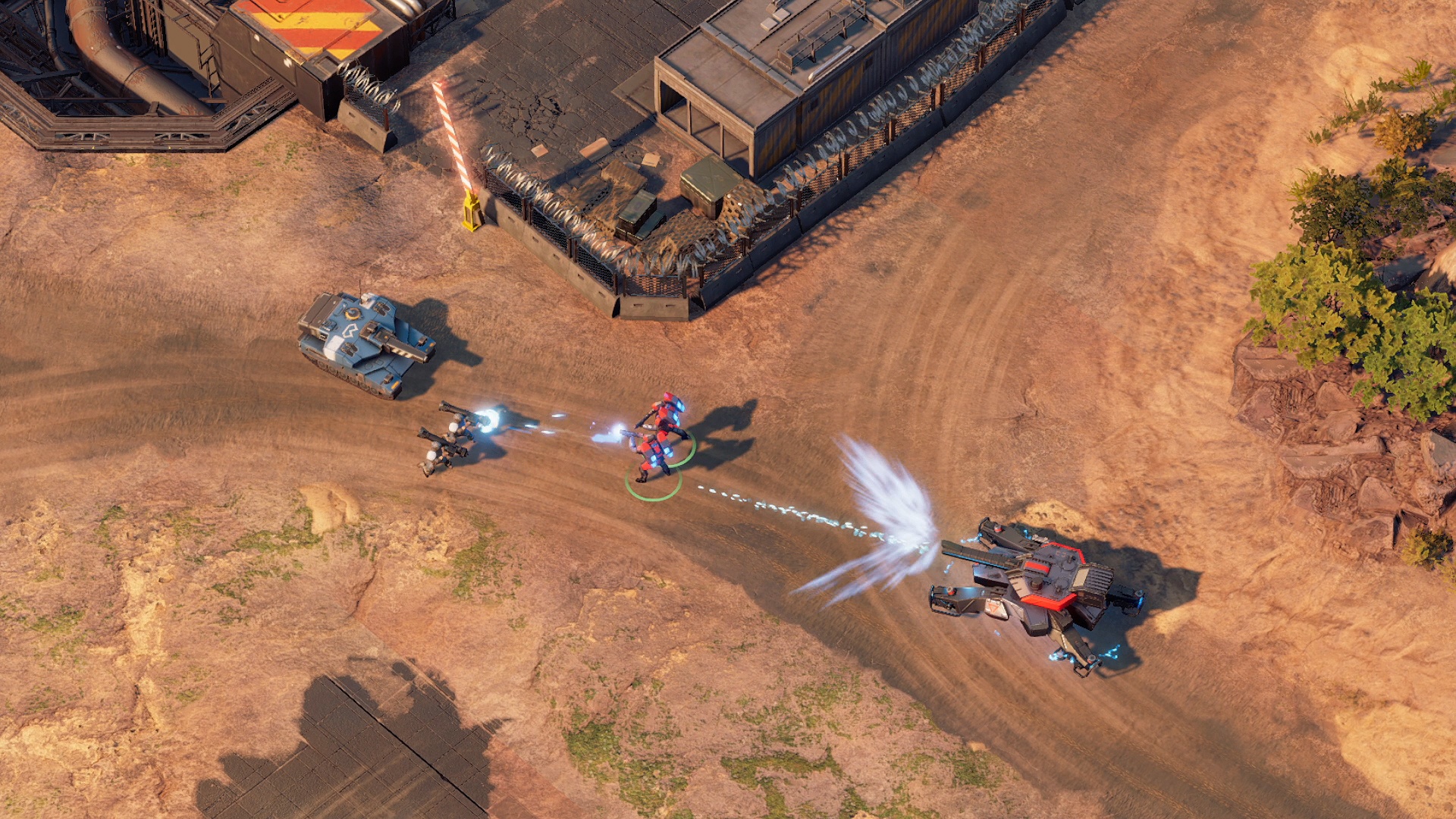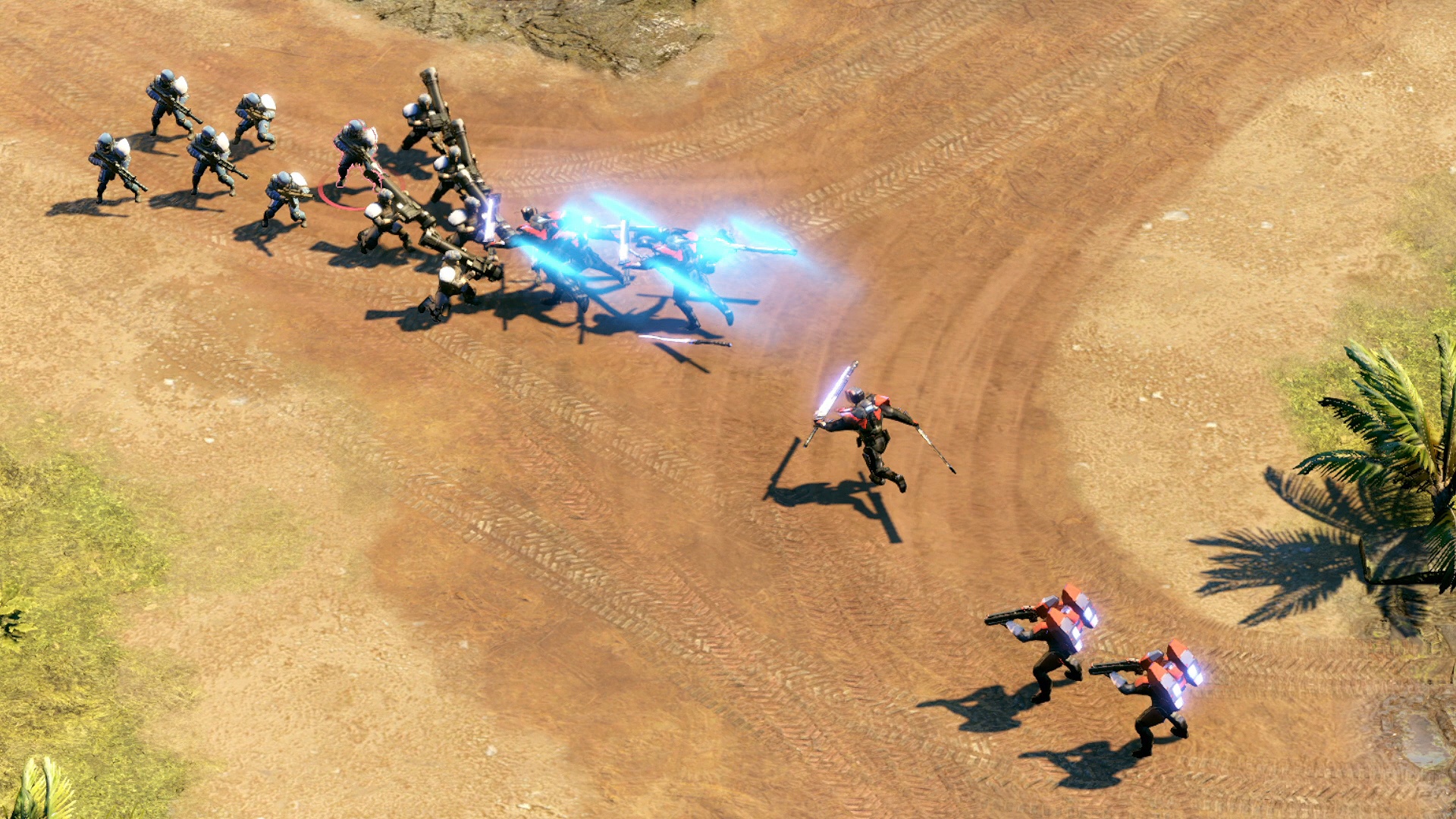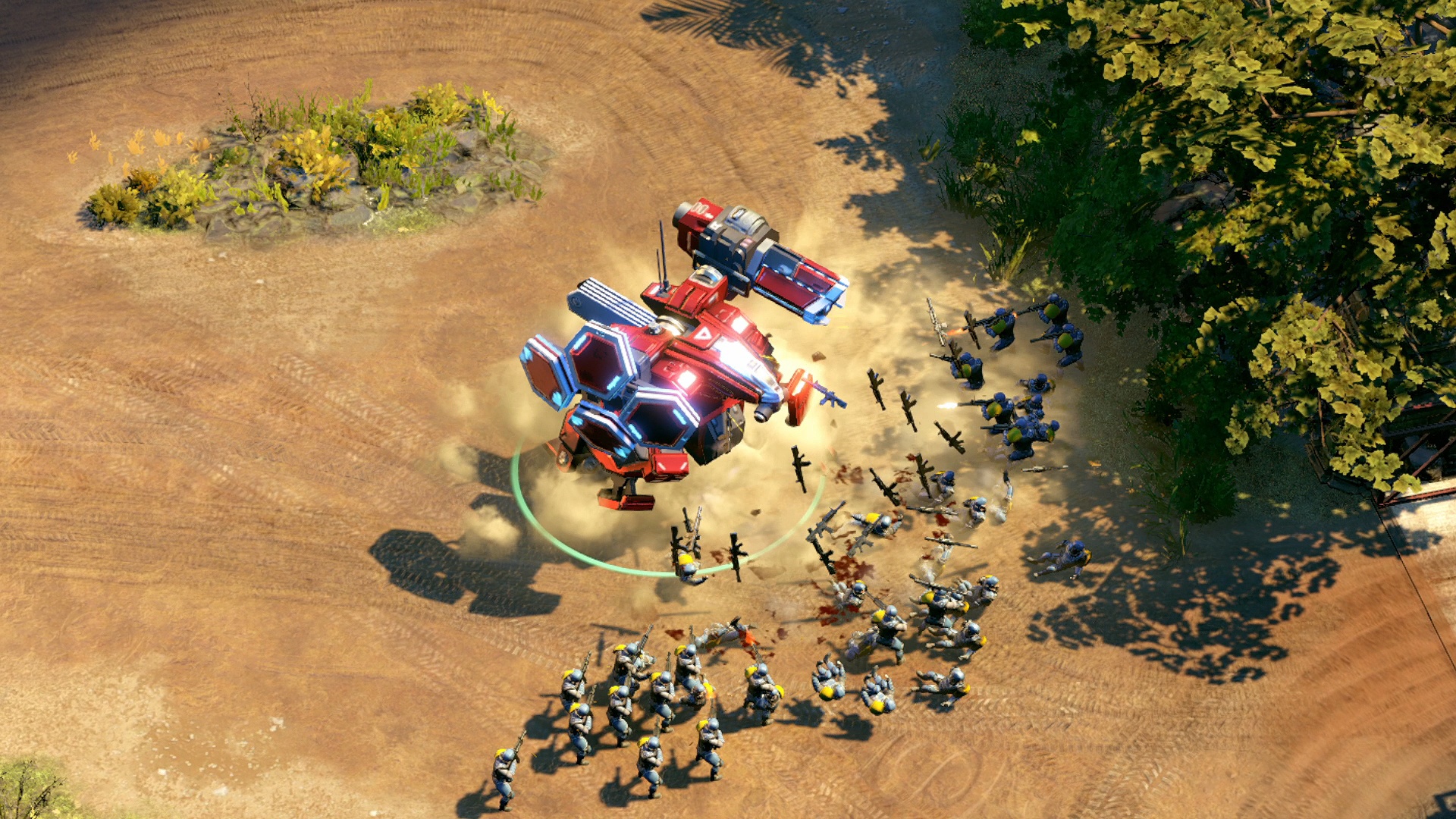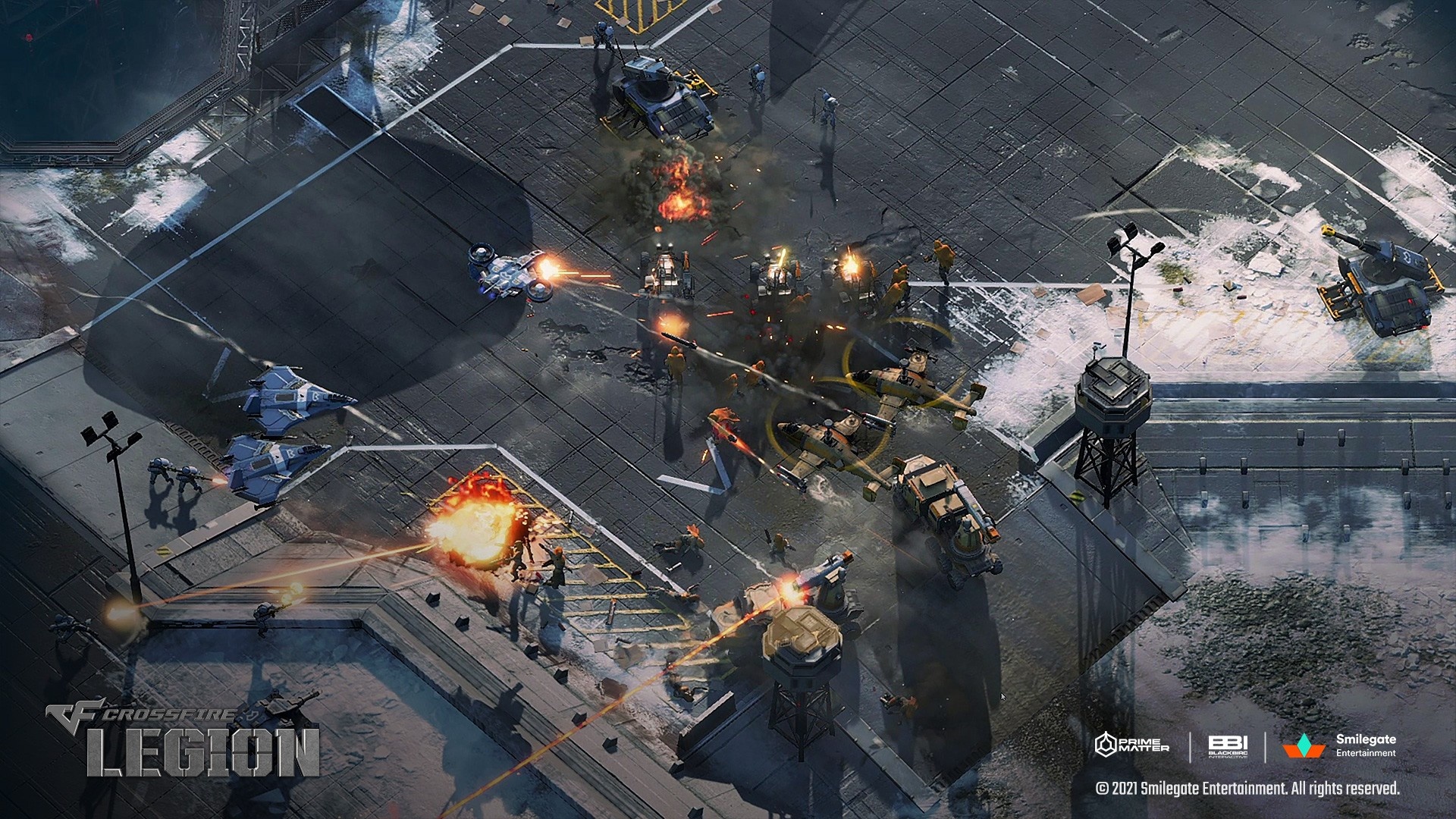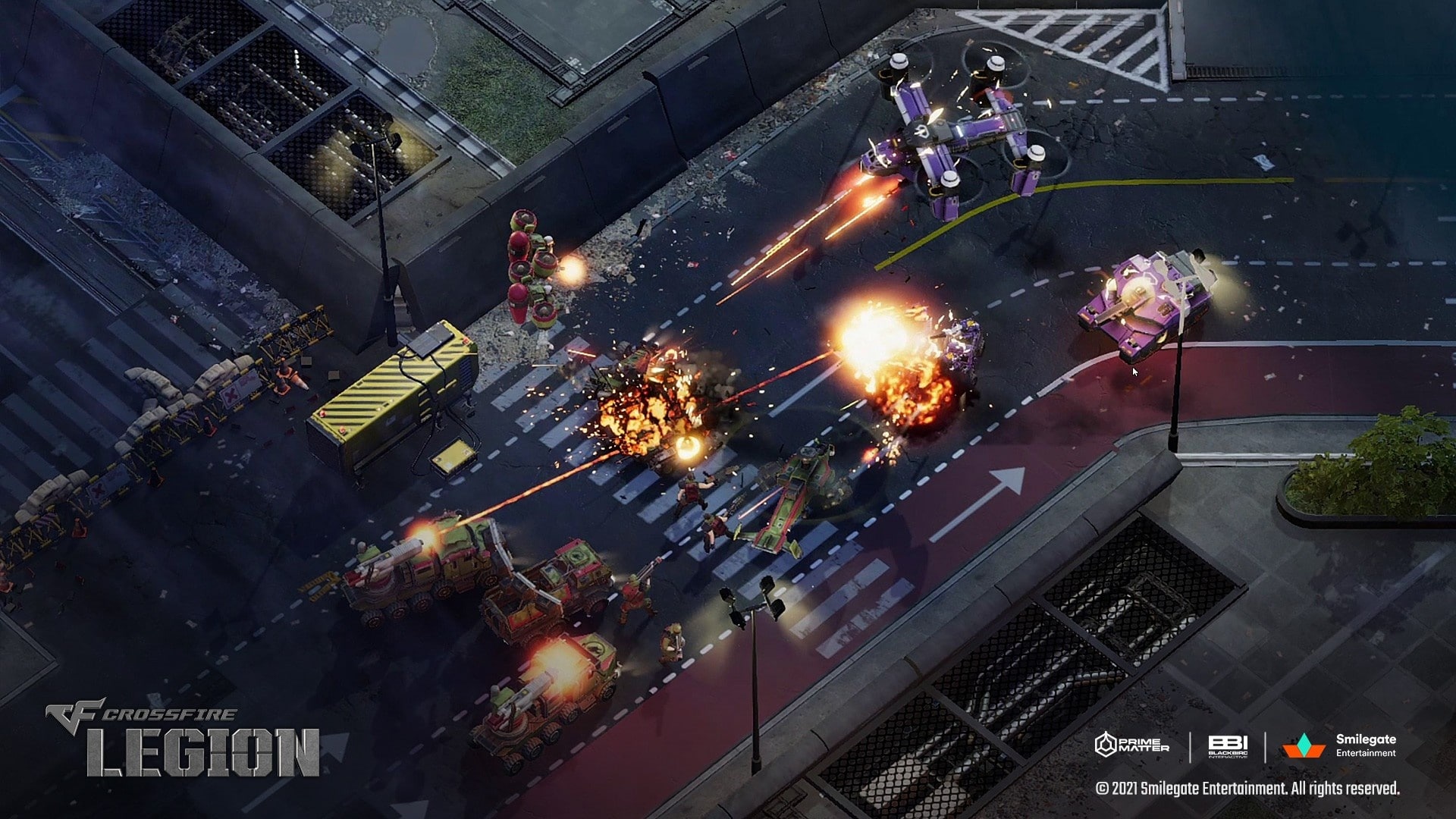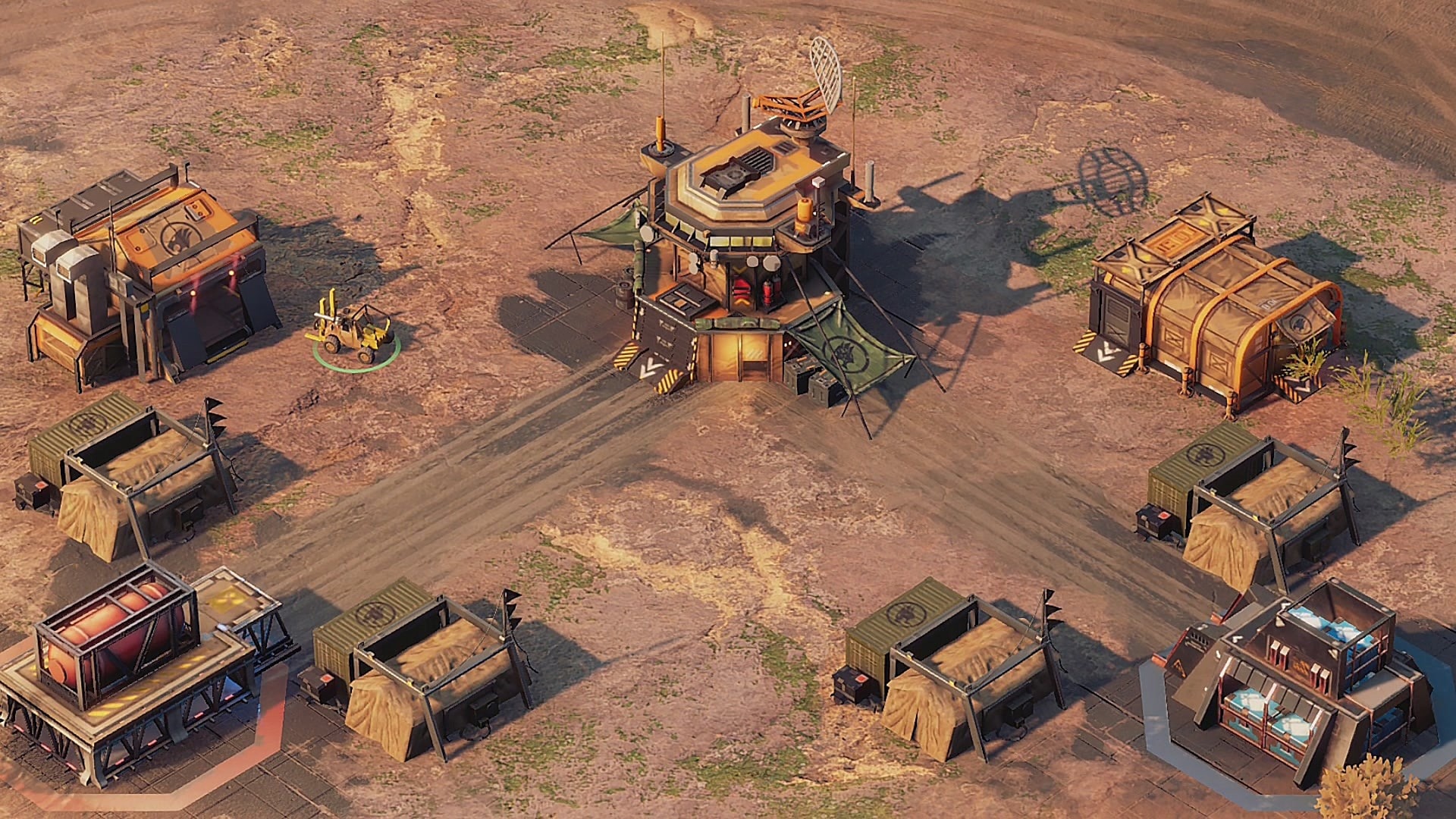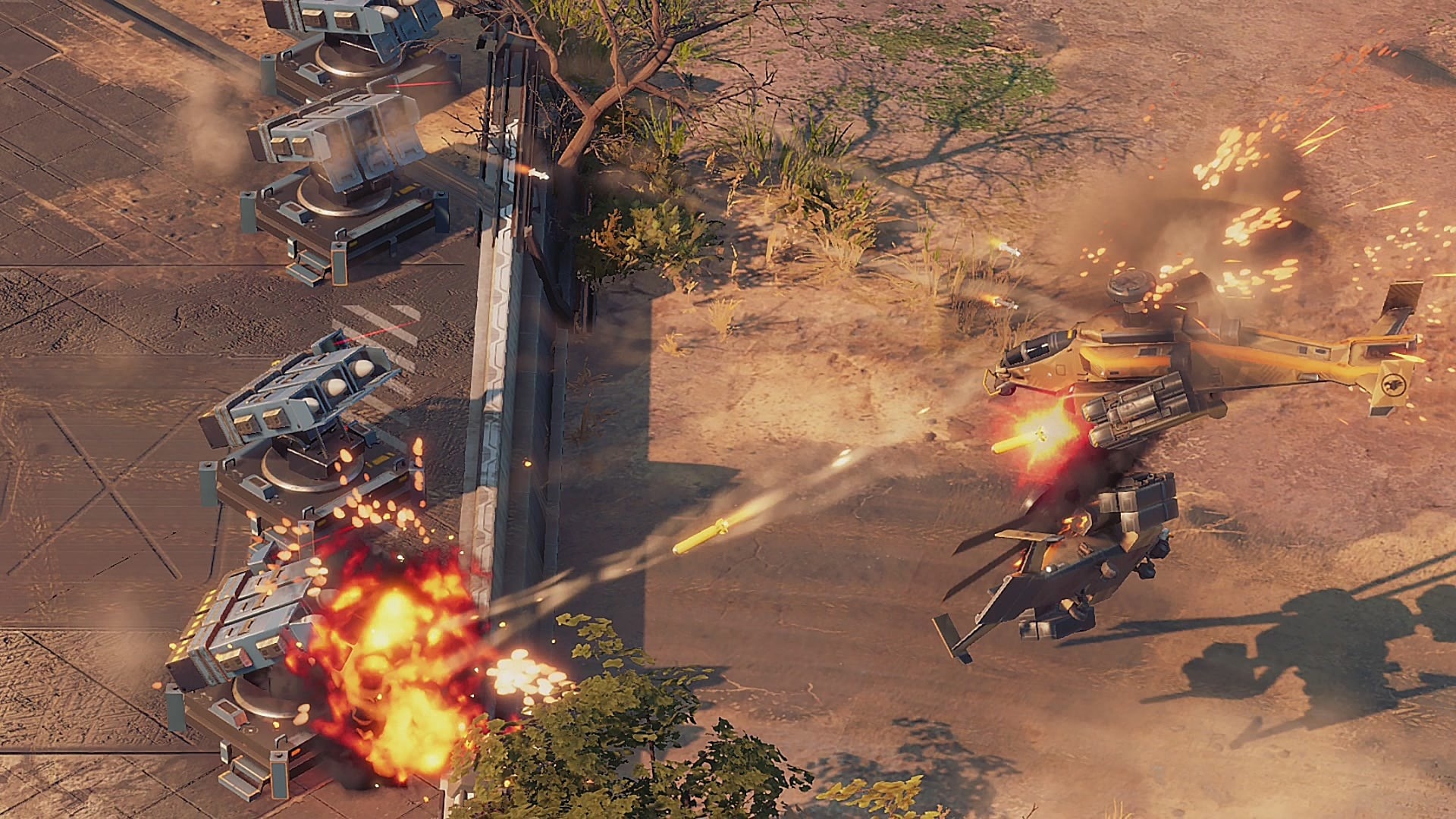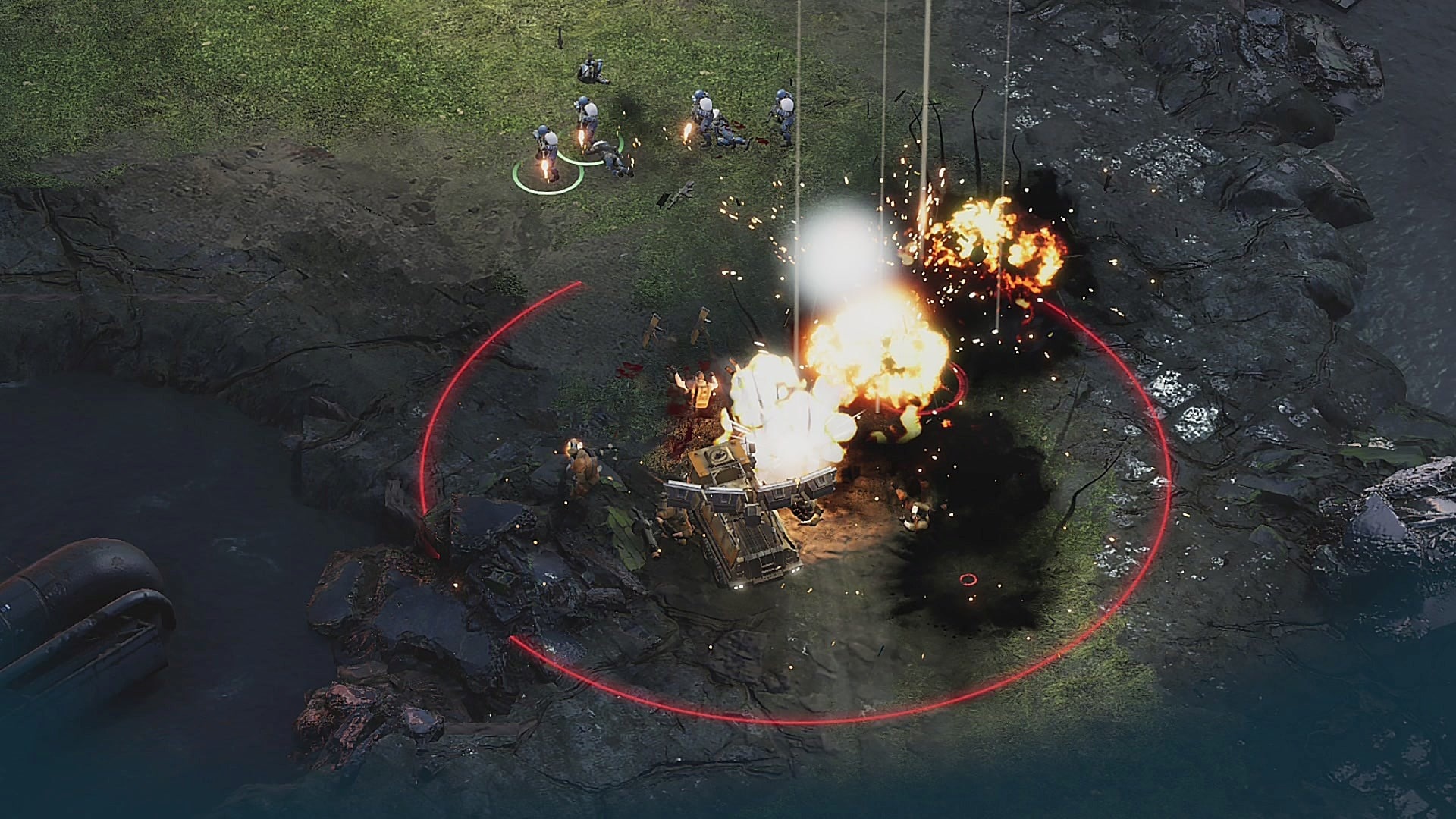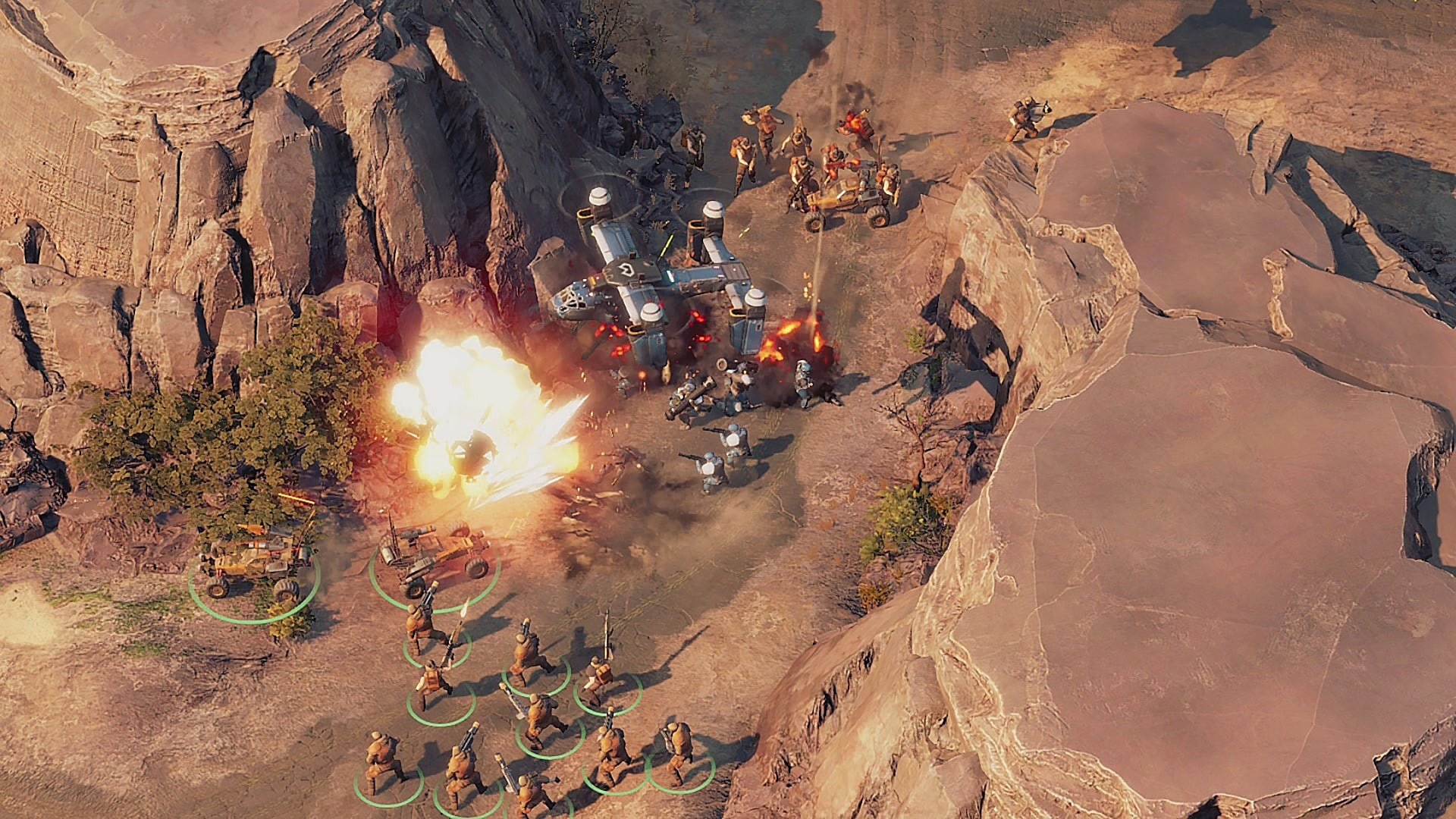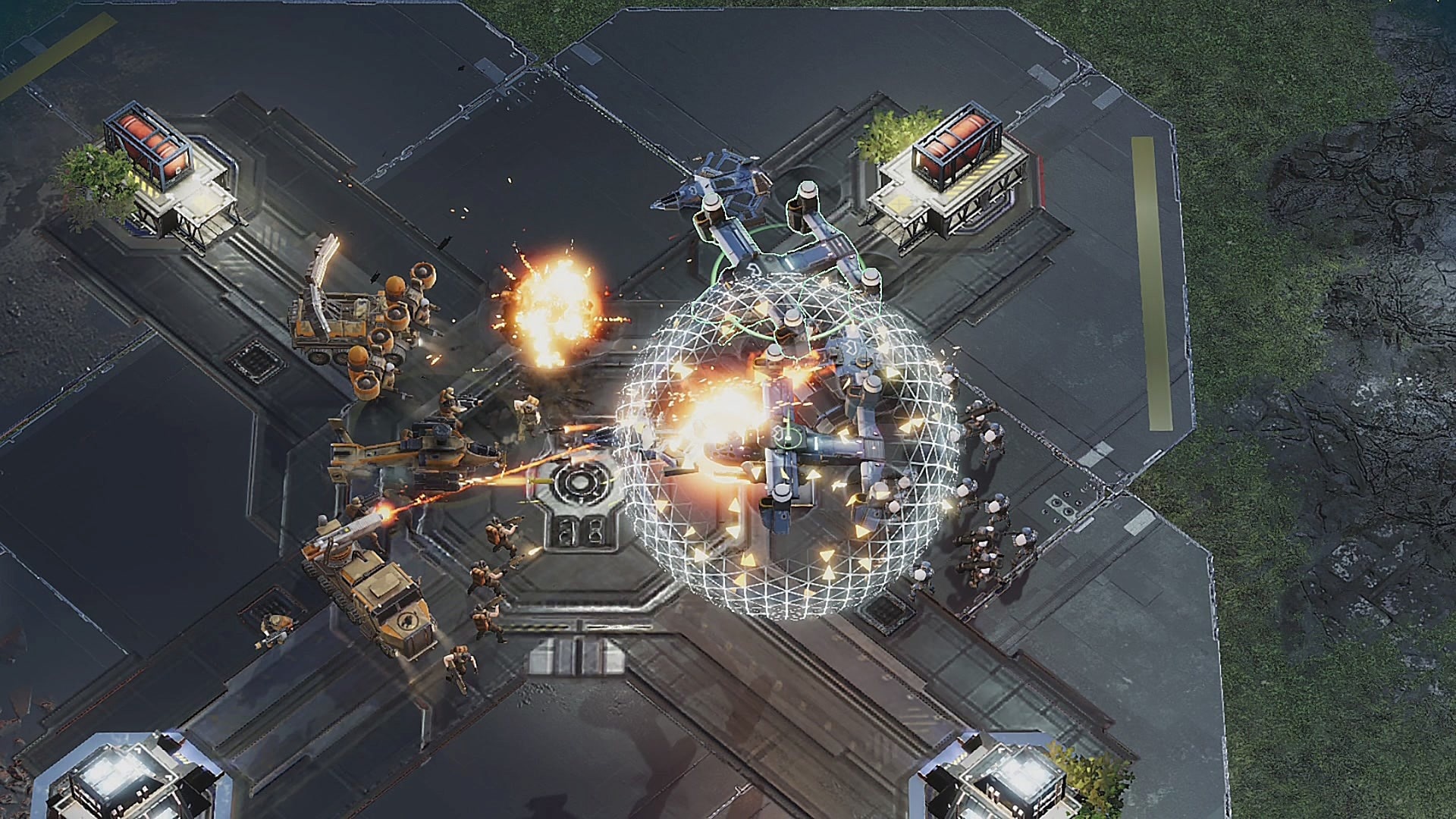Crossfire: Legion combines an action-packed single-player campaign with base-building and strategy like in Starcraft 2. But that’s also part of the problem.
” Password Orca. Repeat Orca. Here we go …
Stalker, estimated time of arrival?
– T minus one minute.
Viper, status report.
– Viper to Phoenix, we’re in position, Operation Alpha is a go.
Commence attack.
– Okay, move!
Okay, people, rock and roll. Targets in sight! “
That’s right. Rock & Roll. What sounds like a mission from Call of Duty is actually the introduction to the campaign of Crossfire: Legion, and in just a few words it already shows what you can basically expect in this real-time strategy game: a lot of action, a lot of bang, and not quite as much brain.
Crossfire is not just any brand. The multiplayer shooter of the same name, released in South Korea, has been extremely successful since 2007. Nevertheless, the series is little known here in the West – but that may also be due to the 0815 setting.
Anyway, what makes Crossfire: Legion exciting is not the scenario – but the fact that it is finally a real-time strategy game with a single-player campaign. We found out how good it is in our test of the Early Access version.
Table of Contents
Hurrah, hurrah, the mercenaries are here
Crossfire: Legion is strongly inspired by Starcraft, even if the setting is more reminiscent of Command and Conquer. That means you don’t slowly build up an economy and a base like in Age of Empires, but only have seven or eight different buildings, two resources and little time to get down to business.
The game is divided into three areas, the campaign, skirmish with a co-op mode and the multiplayer, which is supposed to be the heart of the game. As you can already guess from the introduction, the campaign is characterised by the typical US military hurrah, which seems a little out of date.
While set in a near future, it’s about the mercenary groups known from the Crossfire template, “Black List” (the good guys who act out of charity) and “Global Risk” (the bad guys who like to lock people up).
But in the end it all reminds us too much of American cliché shooters in which good muscle-bound Americans with lots of guns save the world from bad muscle-bound Americans with lots of guns. Add to that a dash of youthful coolness among the “experienced” leaders of the most powerful organisations in the world and the cliché box is almost plundered.
In terms of gameplay, the urge for action is expressed in entertaining missions in the course of which we shoot our way through a futuristic city and blow up a bunker on a snow-covered mountain. You usually command small and medium-sized combat units or sneak across the map with a single hero unit. After the first two missions, you will also be allowed to build your own base – and then have to wait for further content in the course of Early Access. So far, only the first four missions are playable.
A pinch of Starcraft please… or better yet, two!
If you have played the campaigns of Starcraft 2 and or extra story around the Ghost Nova, the way of mission guidance in Crossfire: Legion will therefore look familiar to you, because there the requirements alternate in a similar way, just like the pacing. Moreover, the similarities don’t end there. The map design, resource mining, building and unit management are also partly similar down to the details.
The two resources fuel and material, for example, can only be developed at predetermined points with another command centre, where small worker drones then travel back and forth between the command centre and the resource field. This is one-to-one the system from Starcraft.
Also, the maps are predefined, the resources are symmetrically arranged and the base locations are always in the same places. The starting base has a narrow ramp to the rest of the map so that you can defend it better.
With the resources you build supply depots that increase the population limit, as well as barracks, tank factories and hangars to train infantry, artillery and aircraft. There are also defence towers and an arsenal where you research upgrades. Well copied!
Control groups ahead, another … Thor!
Speaking of upgrades. Some units have abilities, some of which are only unlocked by upgrades. These can be poison bombs, energy shields, EMPs or even jump attacks. If you want to survive in multiplayer, you will have to work with the keyboard and control groups to get the most out of your troops.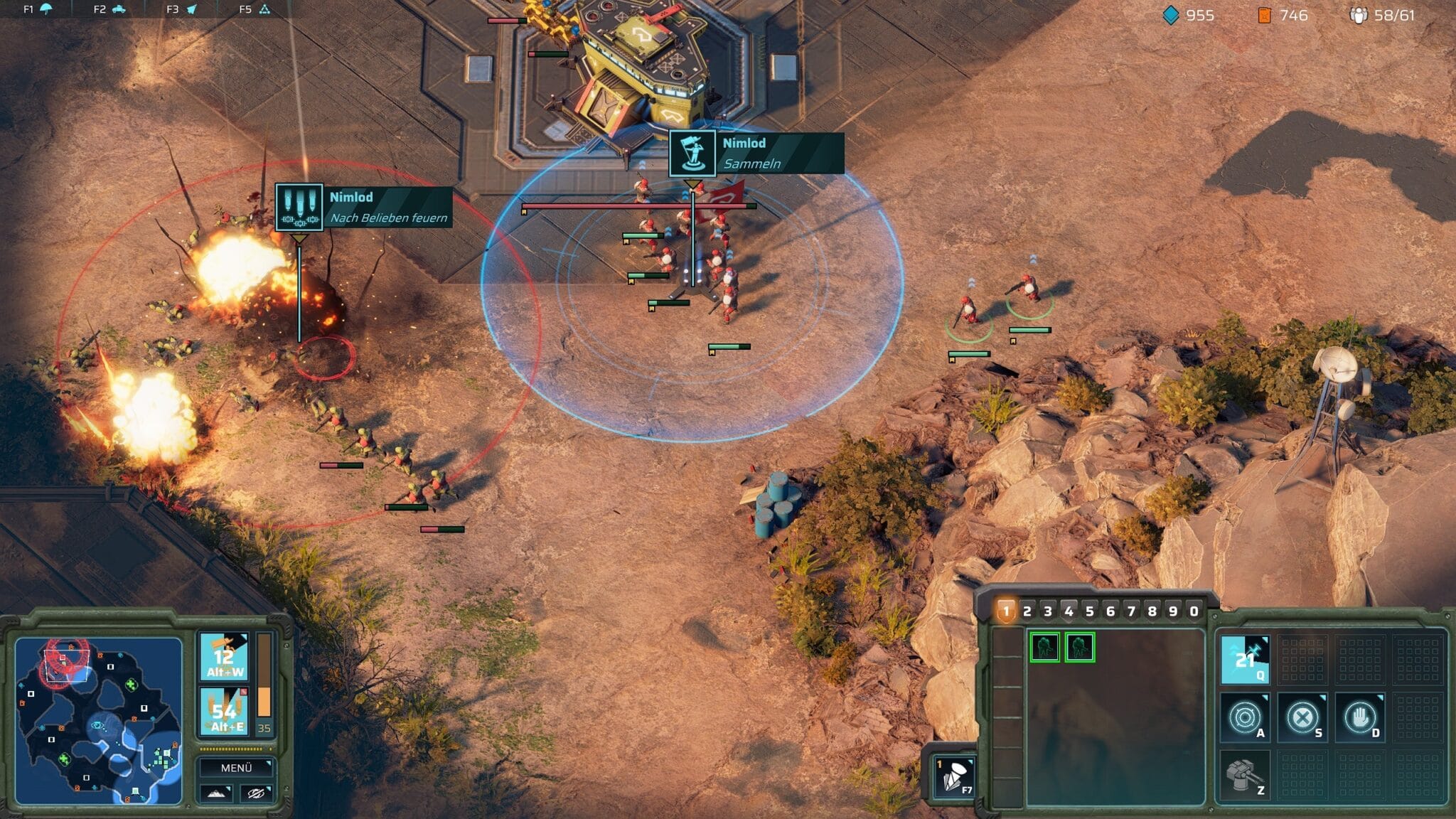
Generally, an understanding of the units helps, whether against the AI or human players. For example, the Titan (the equivalent of Thor in Starcraft) has a very powerful but extremely slow attack, which is suboptimal against a horde of infantrymen.
The missions are well done, Crossfire: Legion is definitely fun. However, at no point can the game keep up with the great role model Starcraft in terms of staging, mission design and narrative.
Terrans, Protoss and … Terrans again
What we haven’t told you so far: In Crossfire: there are also, as in Starcraft, three factions, at least two of which also seem to be heavily inspired by Starcraft. The evil “Global Risk” are basically Terrans. They have tanks that can go into a stationary siege mode, while their infantrymen can give themselves increased run and fire rates for a short time for a small loss of health (the Marine sends his regards).
The third “New Horizon” tech group, introduced as part of the universe, takes on the role of the Protoss. Their units and buildings have shields in addition to their life bar, which regenerate outside of combat. Their first infantry unit has two electric blades, rushes into close combat and gets a kind of assault attack via upgrade to get to the enemy faster. The Protoss … er, New Horizon is so far only playable apart from the campaign.
Only the third faction, the “Black List”, is not directly based on the Zerg. Compared to Global Risk, it is characterised more by lighter units and is thoroughly average.
Alternate units are the road to balance hell
A little variety is brought by the commanders. Depending on which leader you choose for a match, you have two different special abilities. With one you can heal troops or make them run faster, the other has a powerful bombardment up his sleeve. The energy for this is recharged by killed or lost units.
Before a normal skirmish or multiplayer game, you can then decide which commander you want to use. The same also applies to the units! Crossfire: Legion comes with a deck system, which means you can choose an alternative unit for each faction. Global Risk, for example, can swap its marines, pardon me, soldiers for shield soldiers, which are slower but can take a lot more.
The developers’ plans
So far, Blackbird Interactive, the studio behind Crossfire: Legion and Homeworld 3, is very optimistic about a full release in Q4 2022. During this time, the following content and features are to be added, among others:
- Campaign files 2, 3 and 4
- New maps for multiplayer and co-op
- New units and commanders
- Level editor and Steam Workshop integration
- Free saving in the campaign
- Replays
- Customisable key mapping
- Improvements to interface and lobby system
No, no, no, an in-game shop had to be included
And the worst part is yet to come: You have to buy the alternative troops with in-game currency. You can also play for them, but with real money you’ll be faster, of course. The developers said that matchmaking will take your unit progress into account, but we are sceptical. In a competitive real-time strategy game, an in-game shop that offers access to other units is basically not a good idea.
Apart from this monetisation concept, however, the multiplayer offers decent entertainment. The sound design in particular is really powerful, for example when tanks explode or helicopters are shot down. It’s fun to flatten the enemy’s base. We can still forgive minor problems with the wayfinding in view of the Early Access status. Just like some of the animations, which seem a little stiff.
From this point of view, Crossfire: Legion is a solid game, no question. But besides the questionable in-game shop, the title from Canada has a big problem that even Early Access won’t be able to solve: Crossfire: Legion has positioned itself so close to Starcraft that it now stands fully in its shadow.
Preliminary Score Box
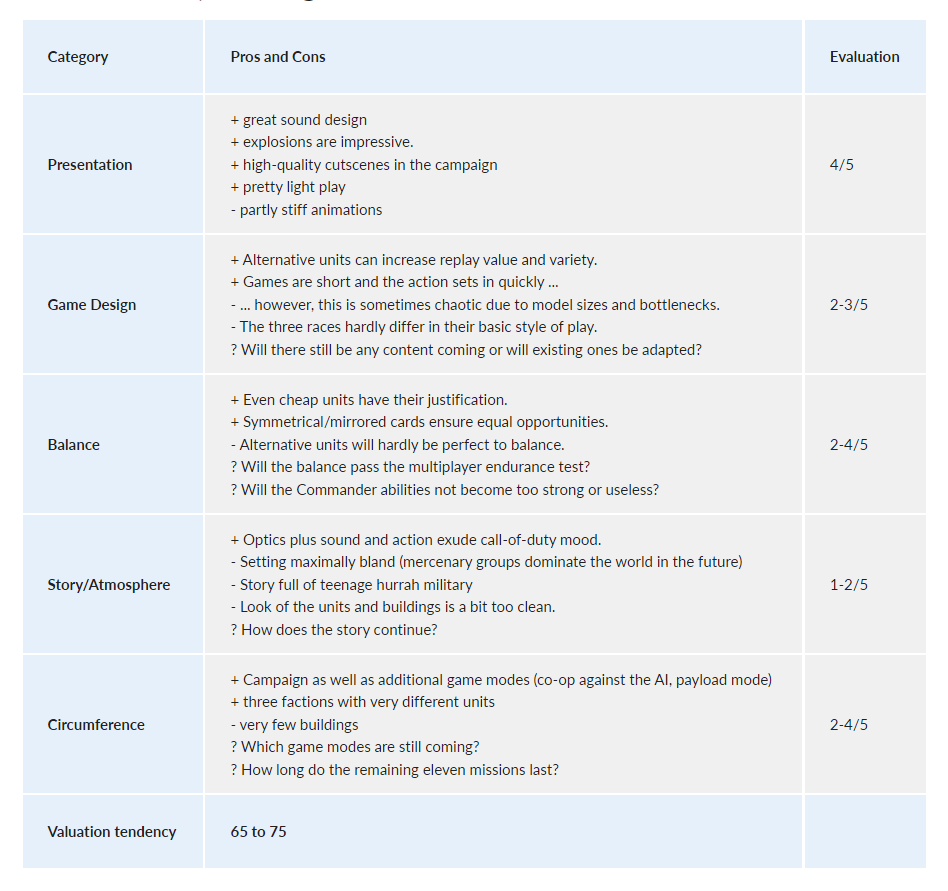
Editorial conclusion
I have two things to note here. One, I can’t stand this typical American military glorification anymore. Yes, I realise that’s a matter of taste, but I had to mention it anyway. Secondly, I’m a big fan of Starcraft 2. I’ve been following the RTS for years in e-sports and have also played it intensively in the rankings time and again. So I understand a bit about competitive, fast-paced real-time strategy games.
These are both factors that don’t make Crossfire: Legion easy in my hands. For while it is without question a competent game even at this stage, I can see little reason why anyone would choose this title over Starcraft 2. Blizzard’s RTS king is simply superior in all respects and, with the exception of the campaigns, is now even free. The only reason I can think of would be that Crossfire: could serve as a genre starter because it is less extensive overall and therefore more manageable.
But then there’s also the unspeakable in-game shop. If they must, the developers can offer singeplayer content or pure cosmetics in their shop. But other units for multiplayer that you have to earn first without additional money? That’s a pretty stupid idea in my eyes.

